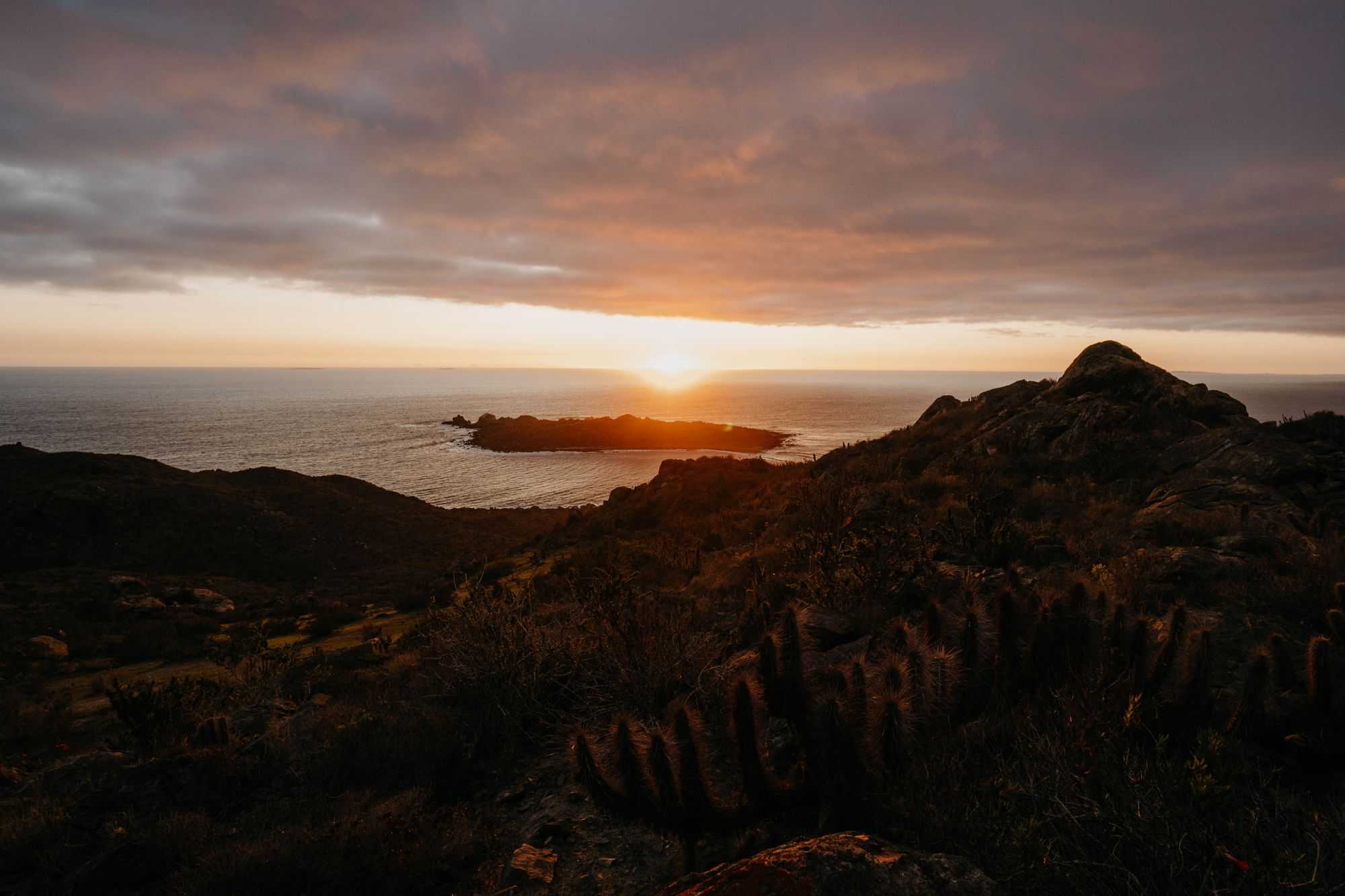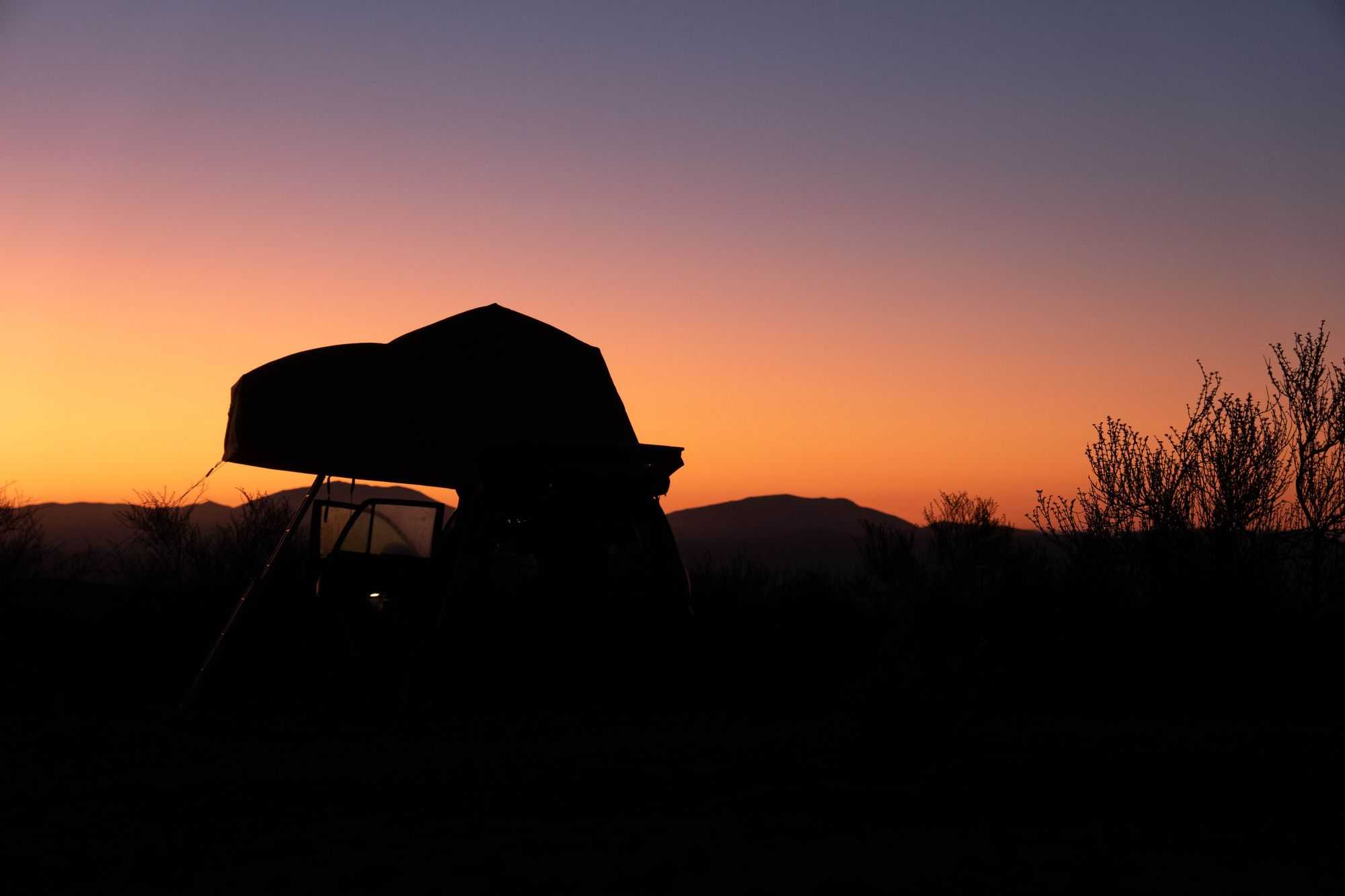First motorised adventures
Off we go, wild enchanting coasts, first signs of spring, breathtaking sunsets and one of the driest regions on earth await us on the first kilometres with Javier, our car.
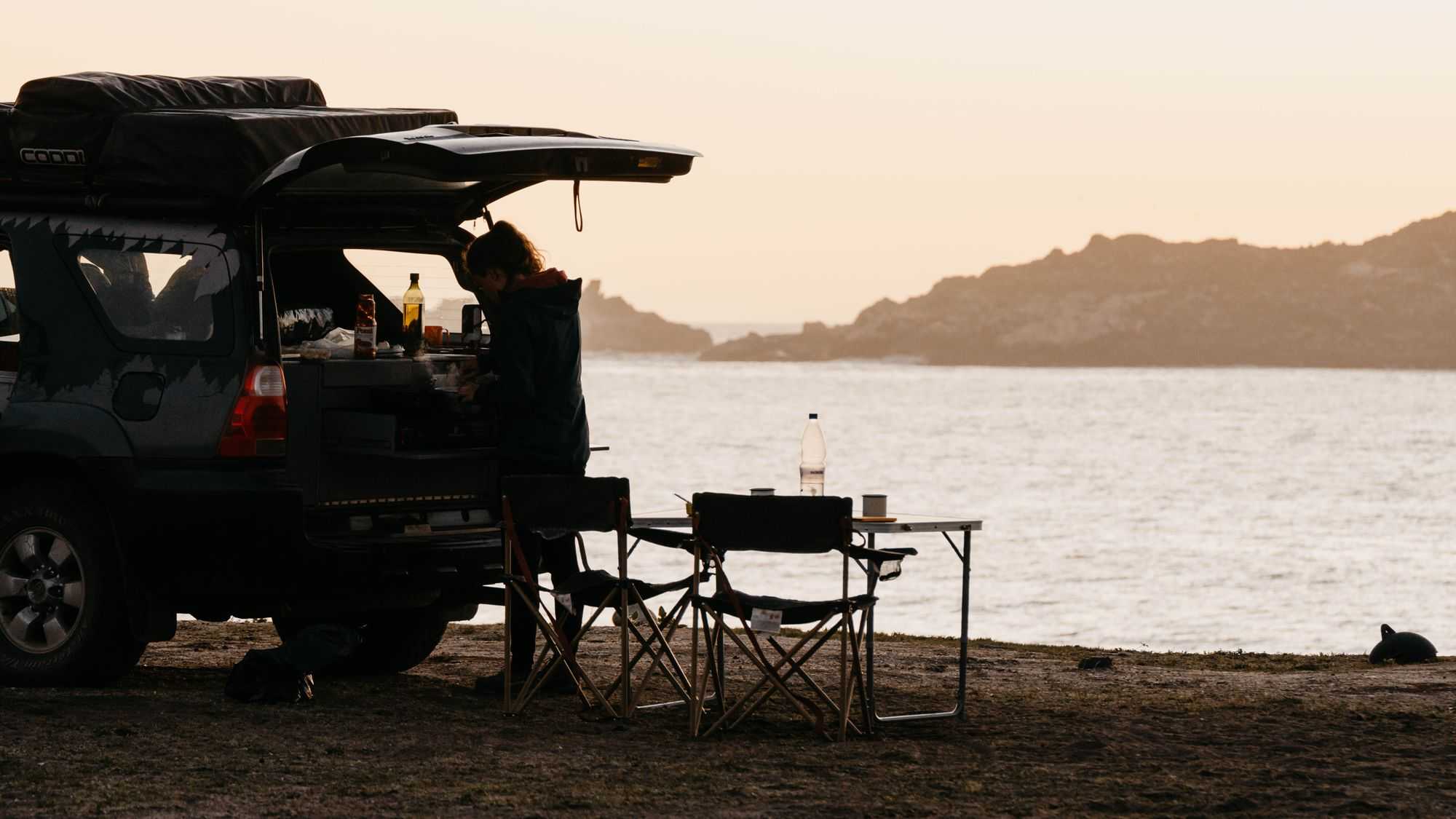
We are on the road again, finally. How we have been looking forward to finally leaving the city and the smog of Santiago and exploring the country on our own four motorised wheels. We are drawn northwards first, because the south of the country is still in hibernation, so Patagonia will have to wait a little longer.
The first few days we put some kilometres behind us and drive up the coast. We get to know our car and travelling with it. It feels like "glamping". Suddenly we have much more time than with the bike, we can look for nice camping spots without any problems, because a few kilometres more are no problem, we have much more water, we can sit in a warm car when we are cold, we have a fridge, lots of food supplies and much more. Among car or van travellers, our vehicle is considered simply equipped, but for us this already means pure luxury. We become even more aware of how intense the bicycle journey was. And even though we loved this way of travelling (most of the time), we are now enjoying the journey with our Javier, that's how we named the four-wheeler.
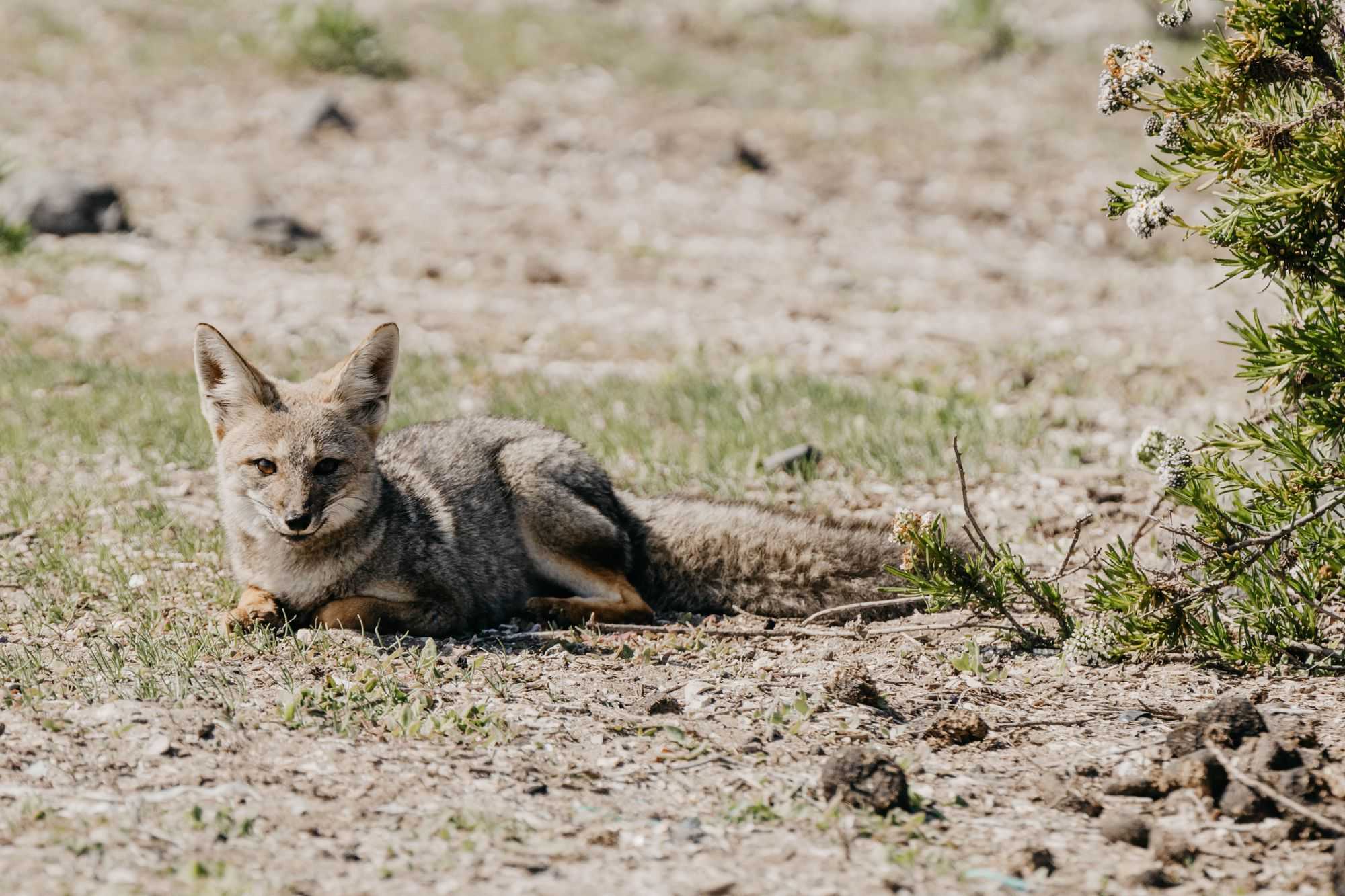
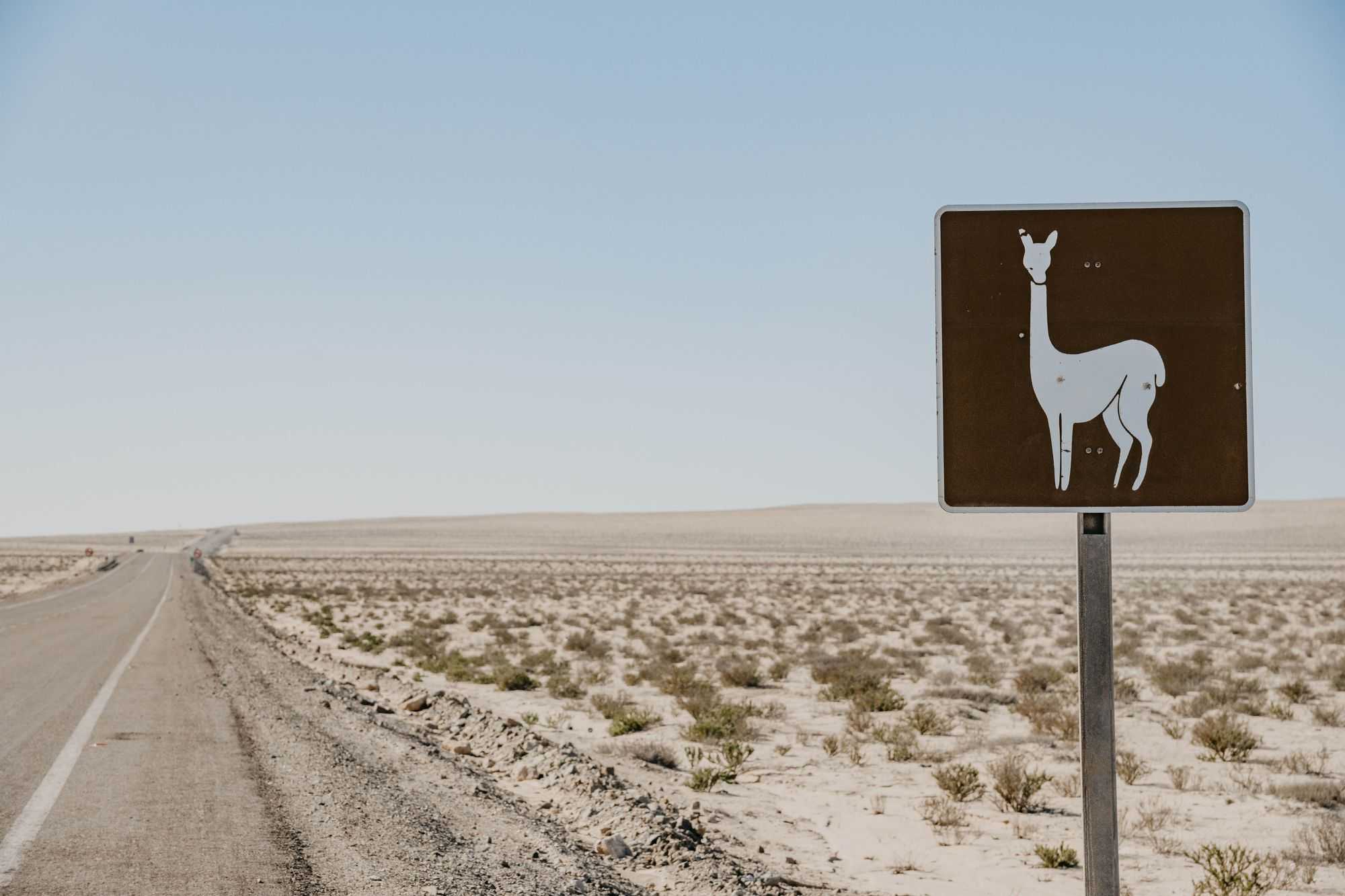
In Chile, wild camping is allowed and yet we are refused on our first attempt at a beach. The friendly gentleman shoves some official-looking document under our noses saying that camping is not allowed on beaches. Fortunately, we are already experienced in camping and don't let this little incident bother us. We drive a little further and shortly afterwards find a great spot by the sea. Wild camping debut at attempt number two was a success.
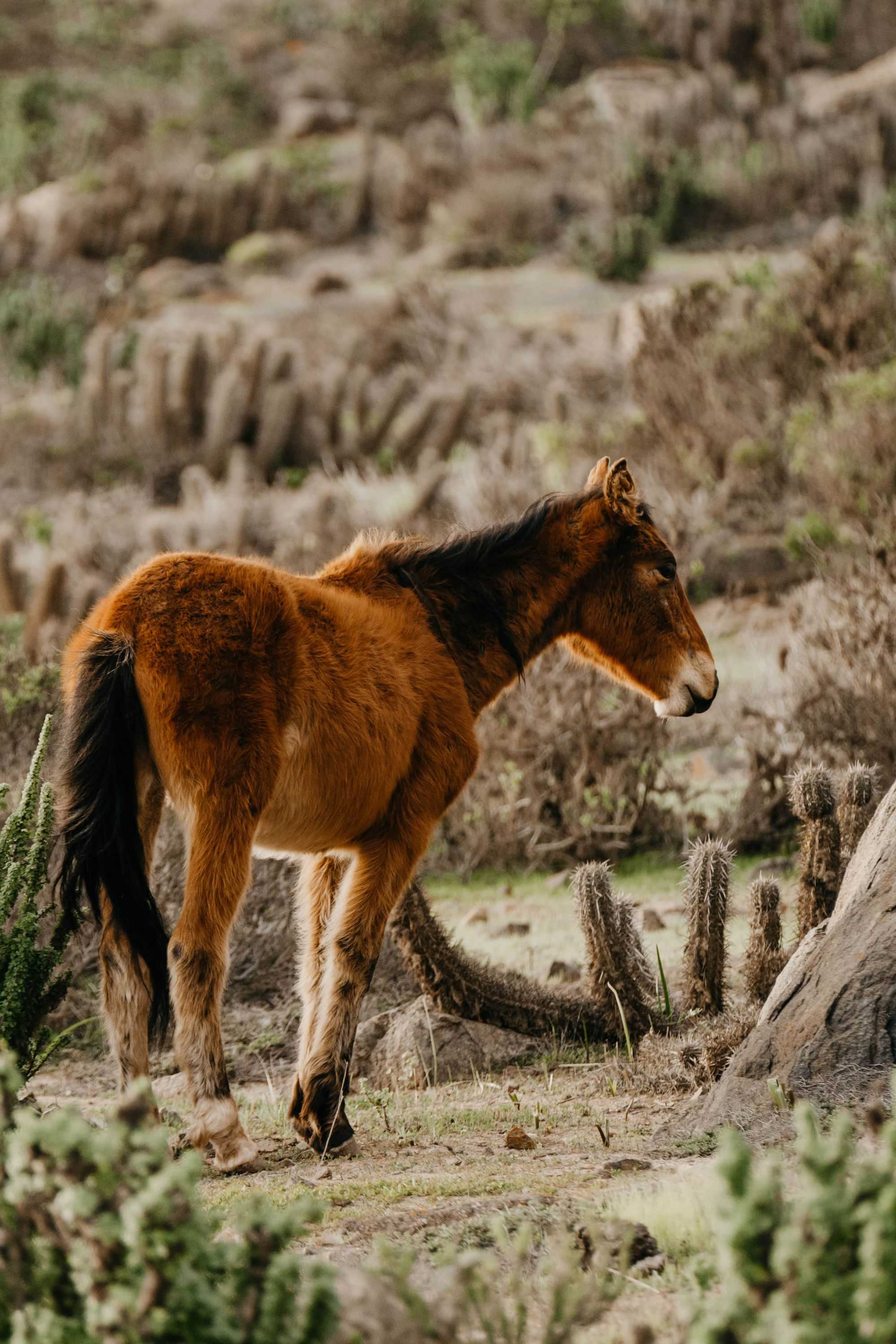
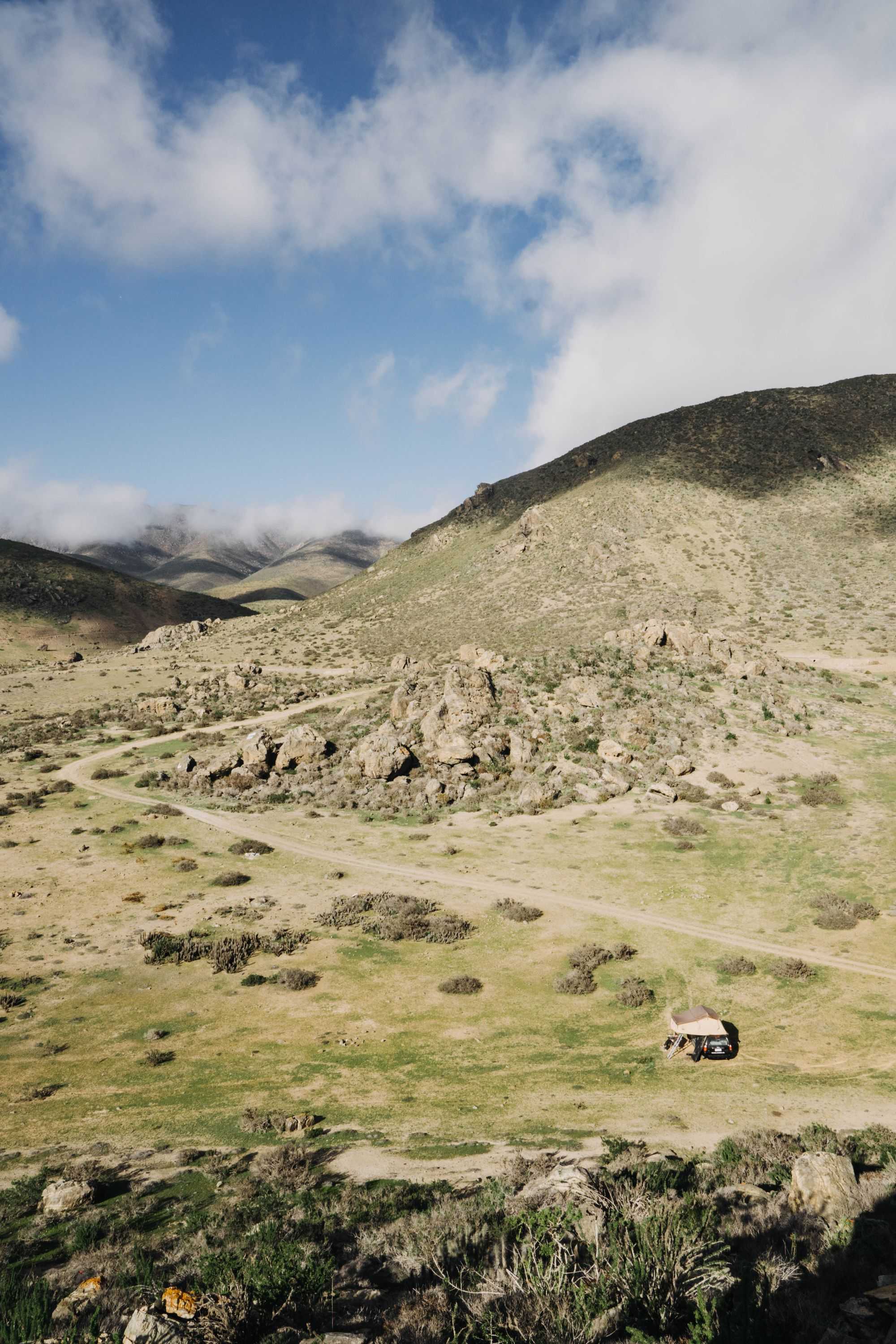
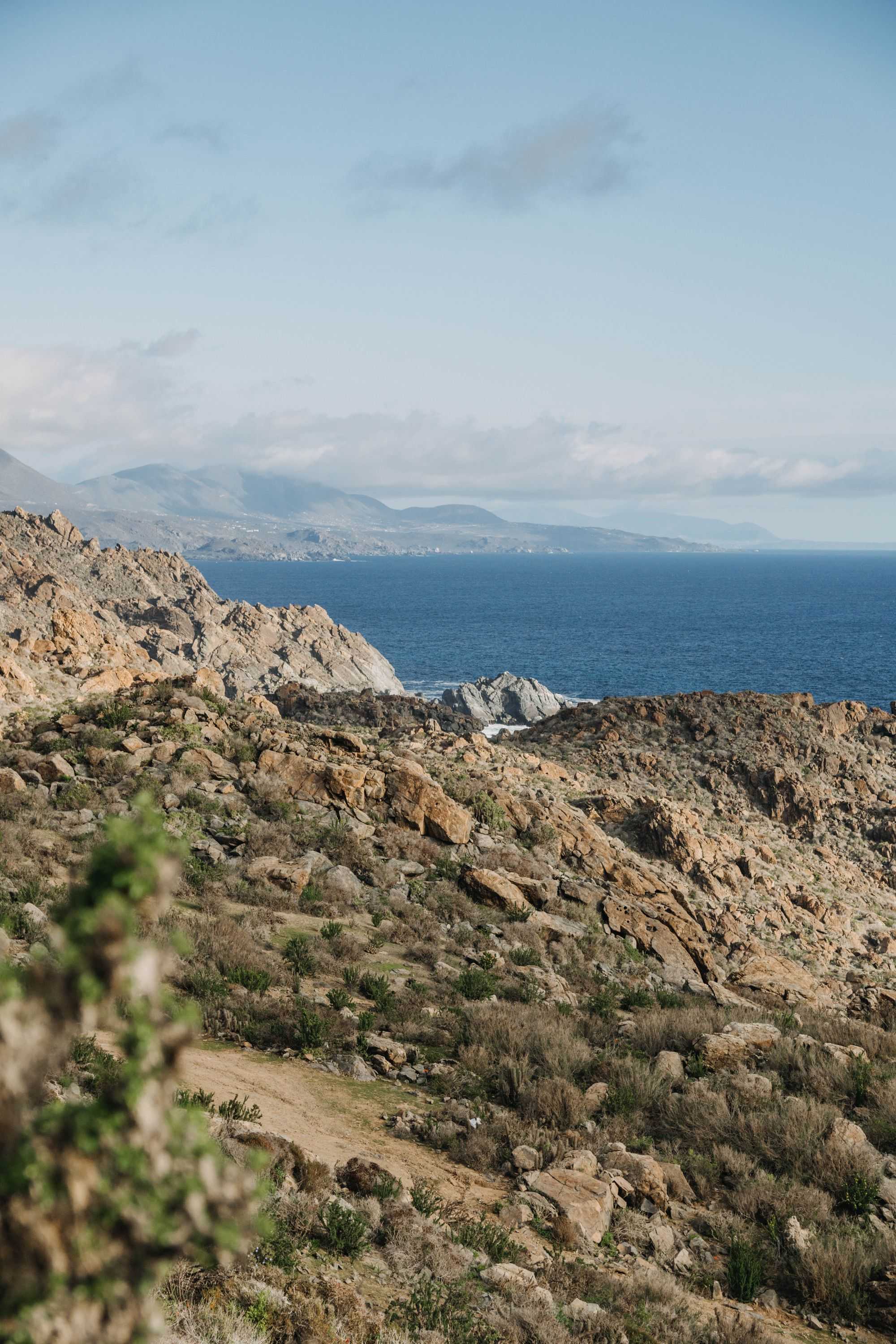
The landscape becomes increasingly barren, hilly and dotted with bushes and cacti. The north, especially the Atacama region, is one of the driest in the world. However, when it rains in winter, the phenomenon of the "Desierto Florido", the flowering desert, emerges. Currently, the chances are good that this spectacle will occur, we are told, which would be a real highlight, especially for Sara. However, we are missing the peak season of this event, which will probably not start for another two or three weeks. But nevertheless we discover the first harbingers. Plants are sprouting everywhere from the dry soil, the first bushes are blossoming, seemingly withered bushes are shooting up, we can begin to imagine what it must be like when the whole desert is covered with flowers.
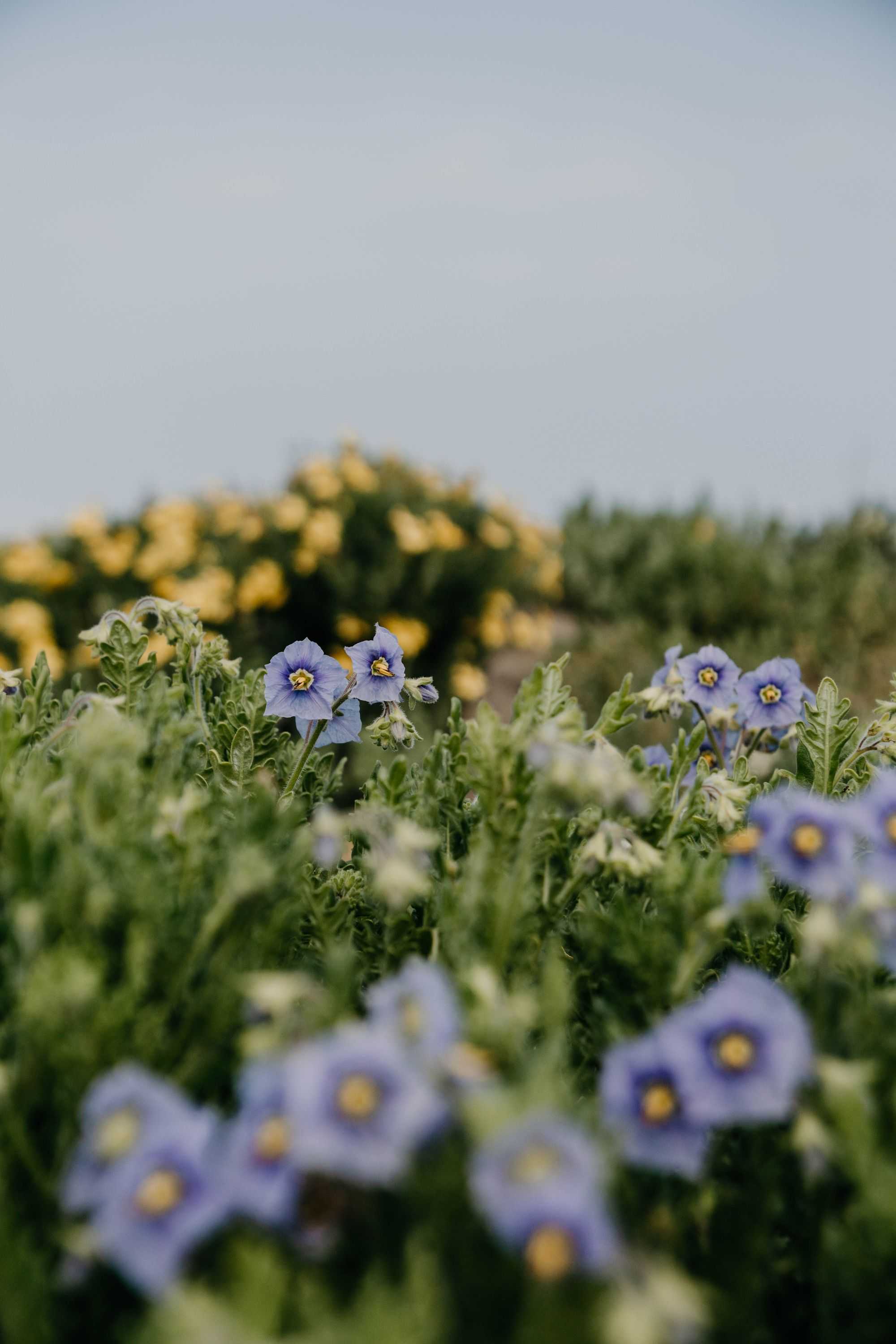
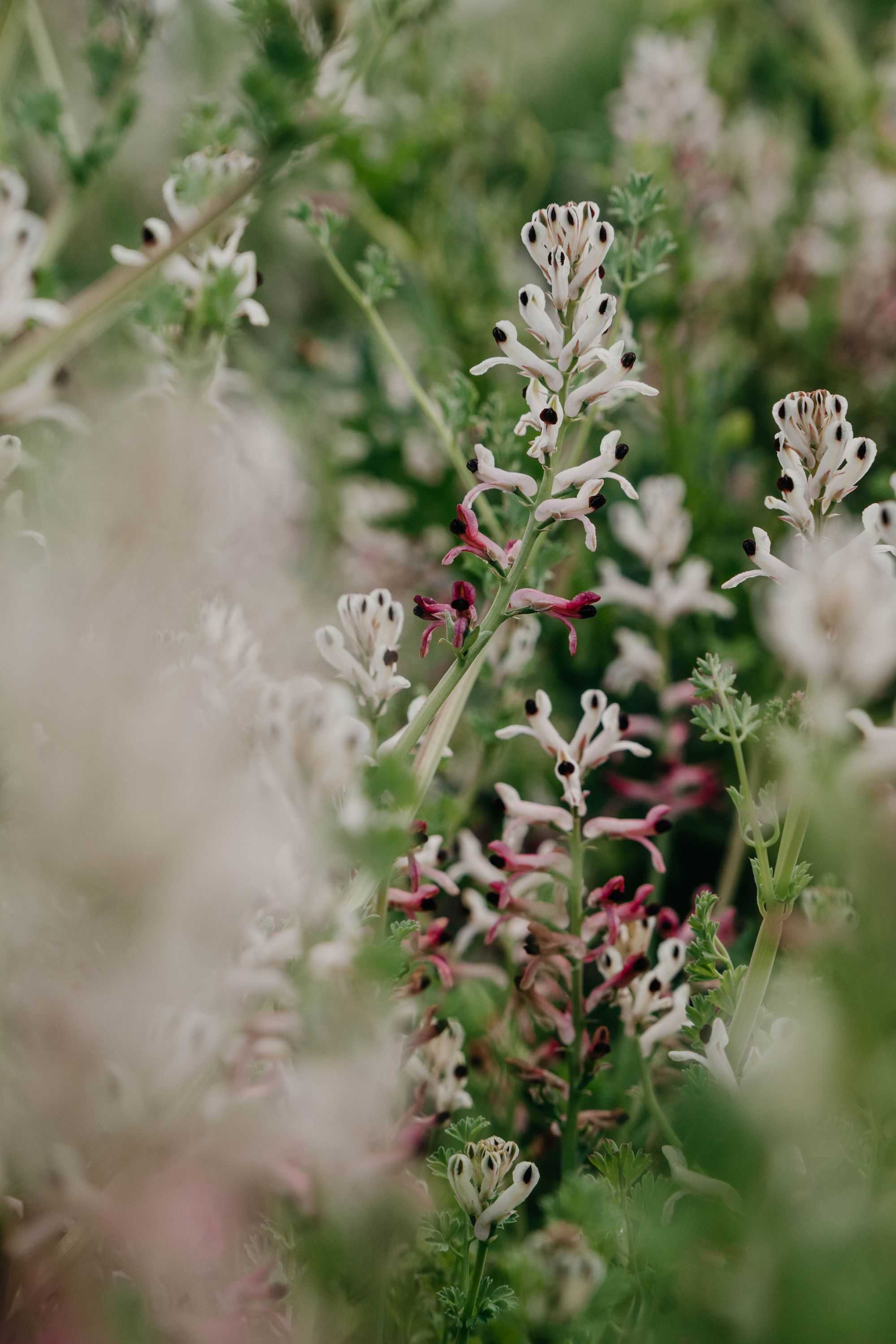
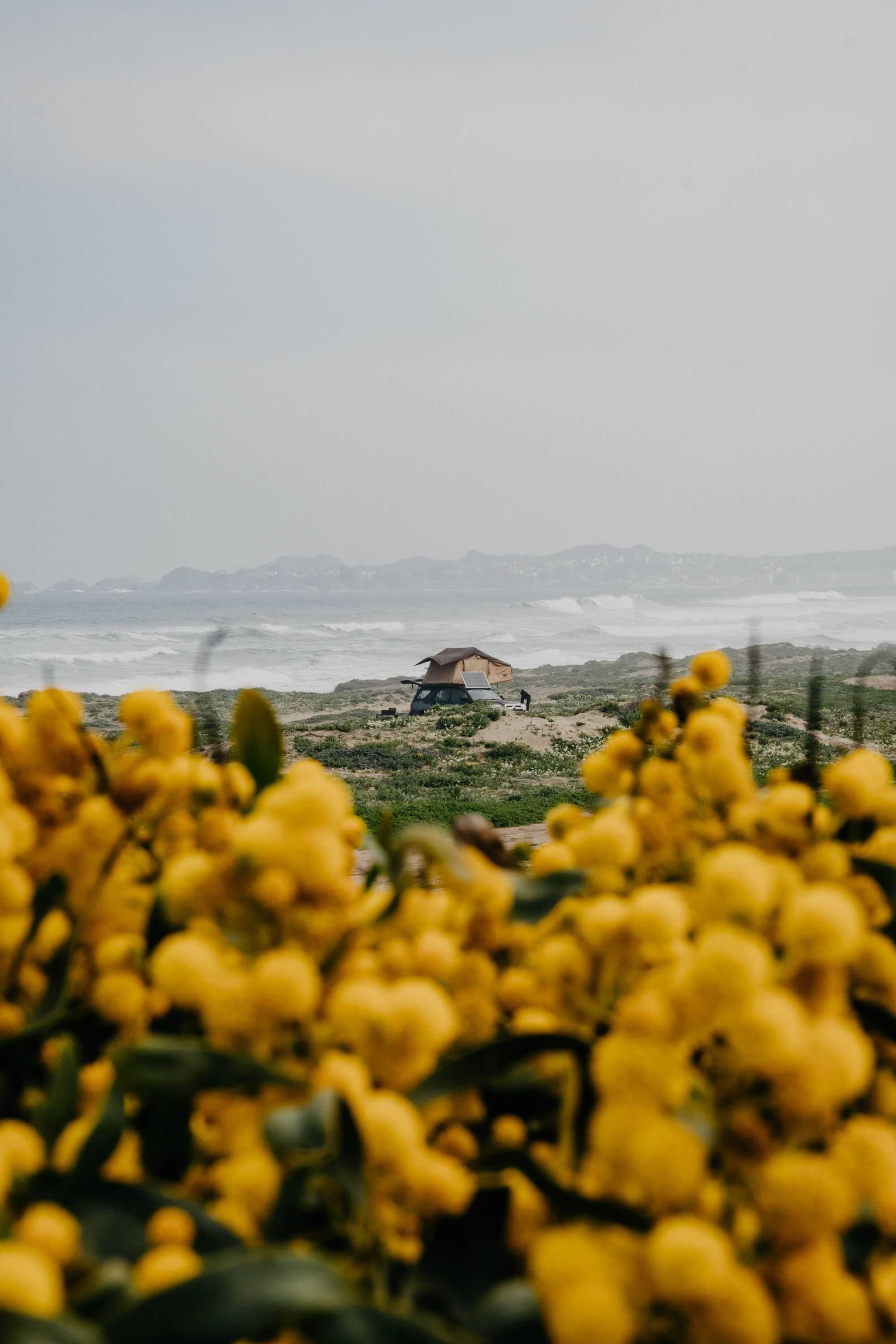
But the dry desert also has its charm. The coast is lined with beautiful wild wide beaches, where we can regularly spend lonely nights under the shining Milky Way, because the region is also one of the best for astronomers. Numerous observatories line our path, but we haven't visited any (yet). In the morning, we are often greeted by a thick blanket of fog, the Camanchaca (eclipse), a well-known phenomenon here. Thanks to this fog, which usually dissipates by midday, the few plants and animals here are able to survive at all. We are not very enthusiastic about this fog, but in the sense of nature we are glad that it exists.
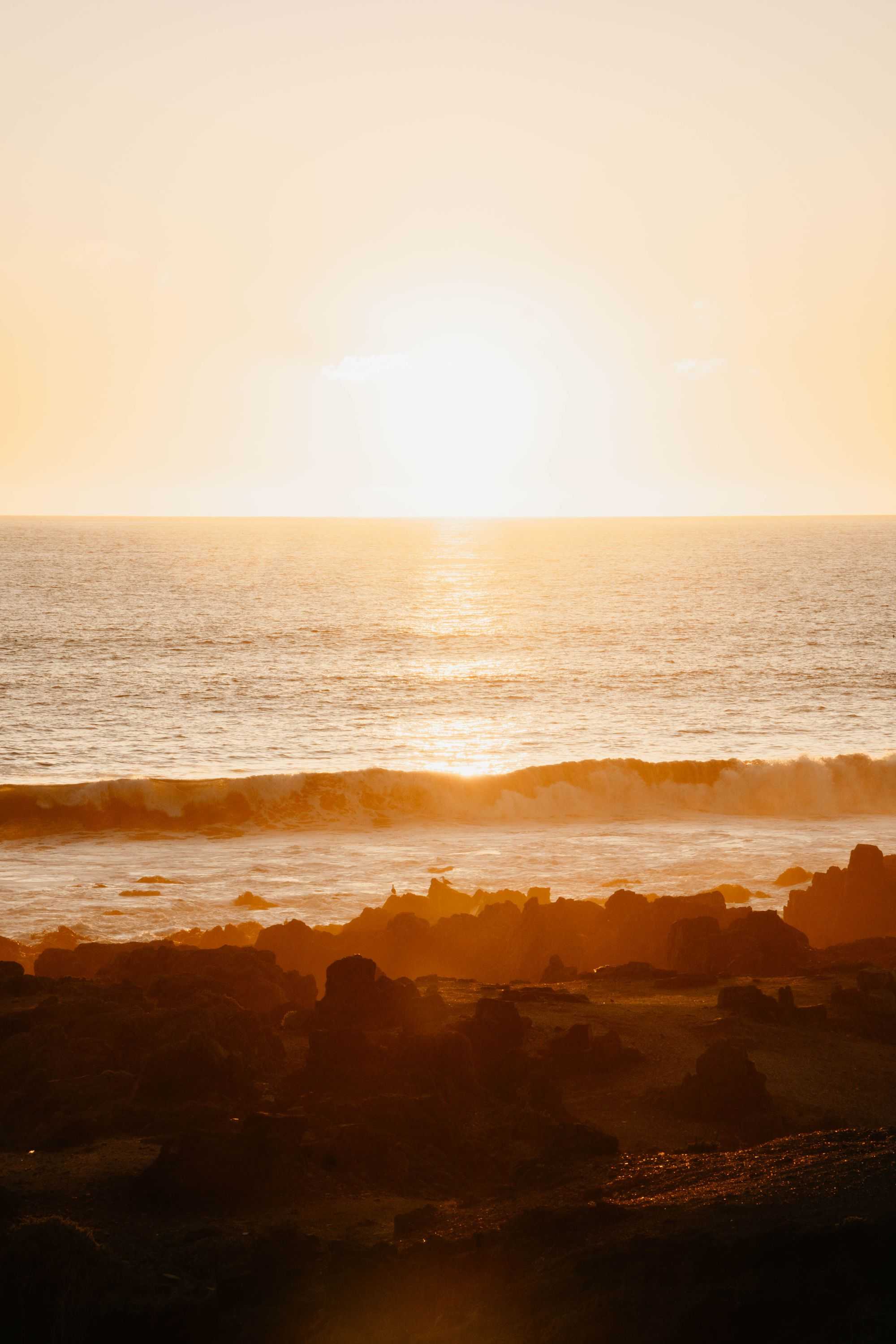
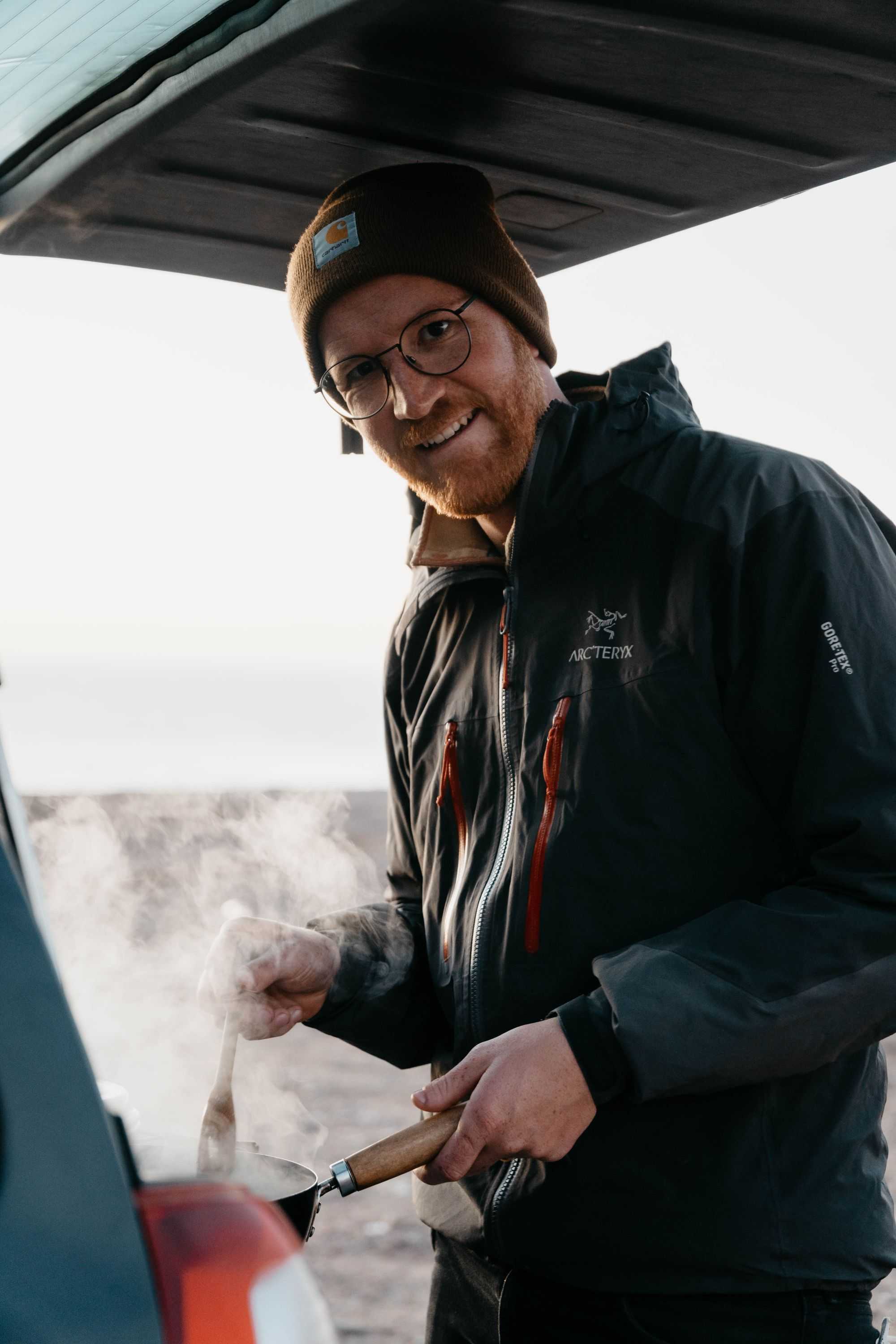
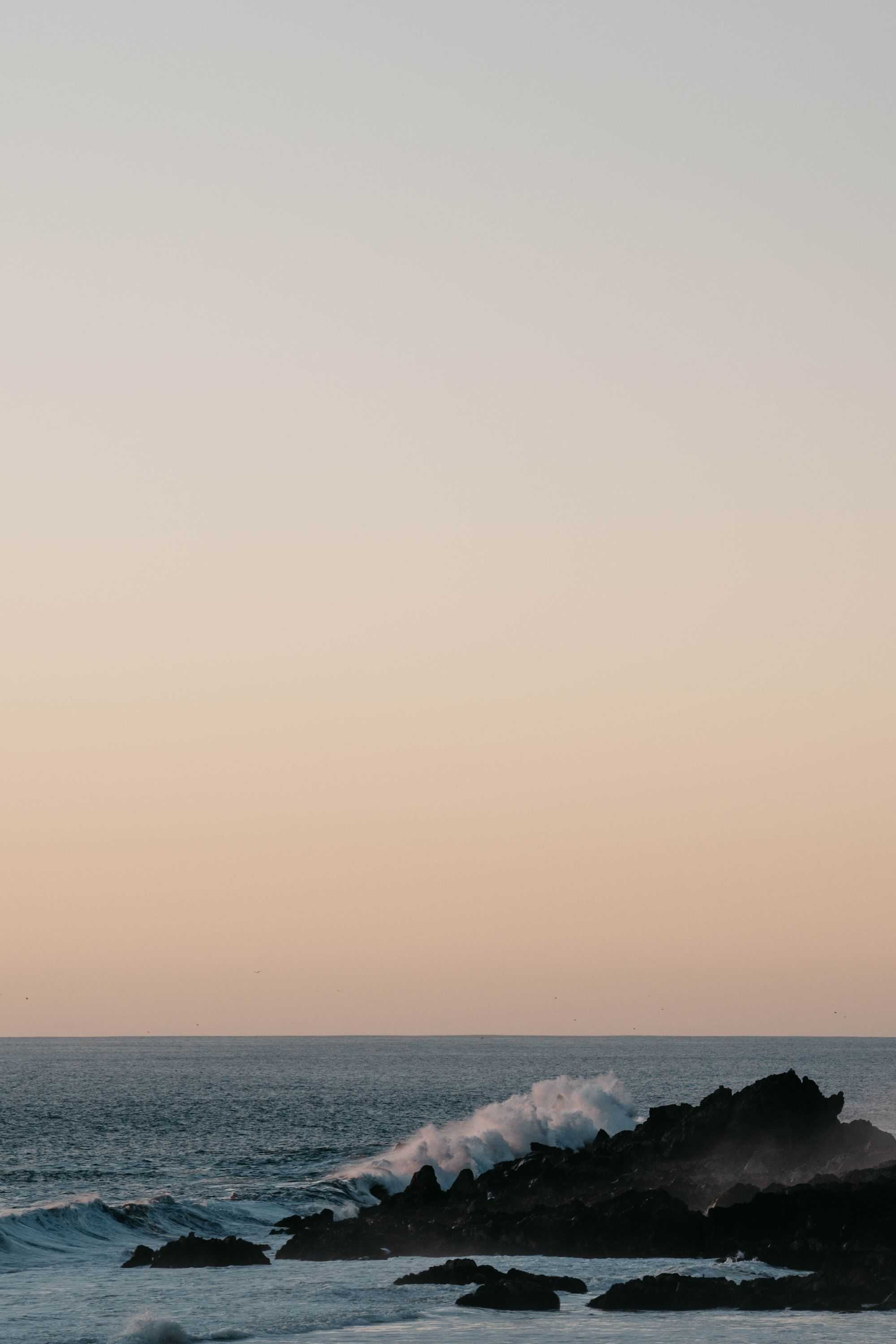
Apart from the beaches, we cross a village here and there, mostly rather sleepy settlements, because it is completely off-season and not much is going on. Most restaurants are closed, only a few locals are out and about. We also quickly realise that we have much less contact with the locals now than we did on the bike, which is partly due to the mentality but also to the way of travelling. We experience the Chileans similarly to the Swiss, except that they are much friendlier and more helpful. Funnily enough, they seem to find it difficult to speak Spanish slowly. Even if we ask for it or it is obvious that our Spanish is limited, they just repeat the same sentence at exactly the same speed and slurred. Oh well, we do our best and enjoy the opportunities to use what we have learned.
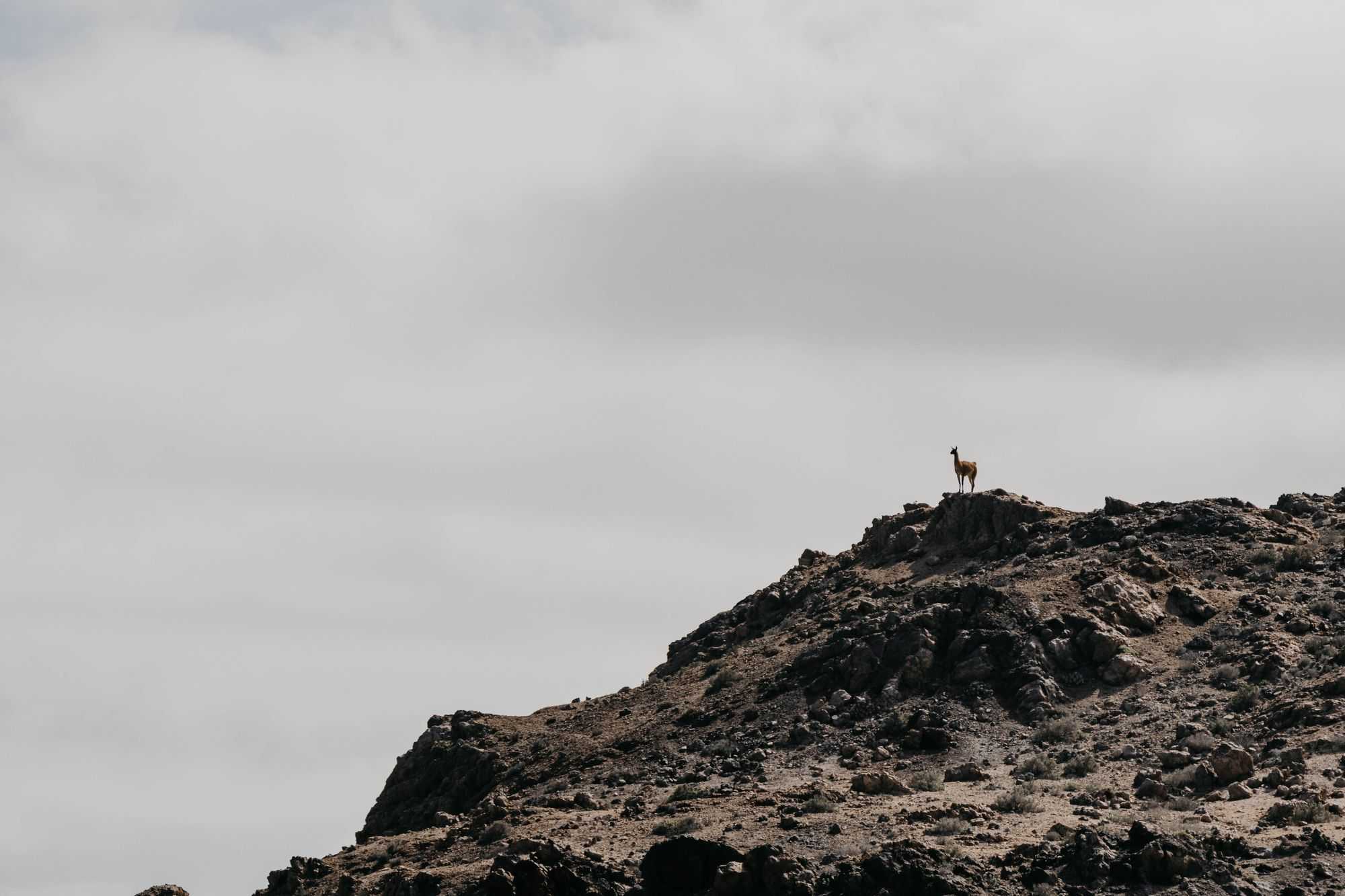
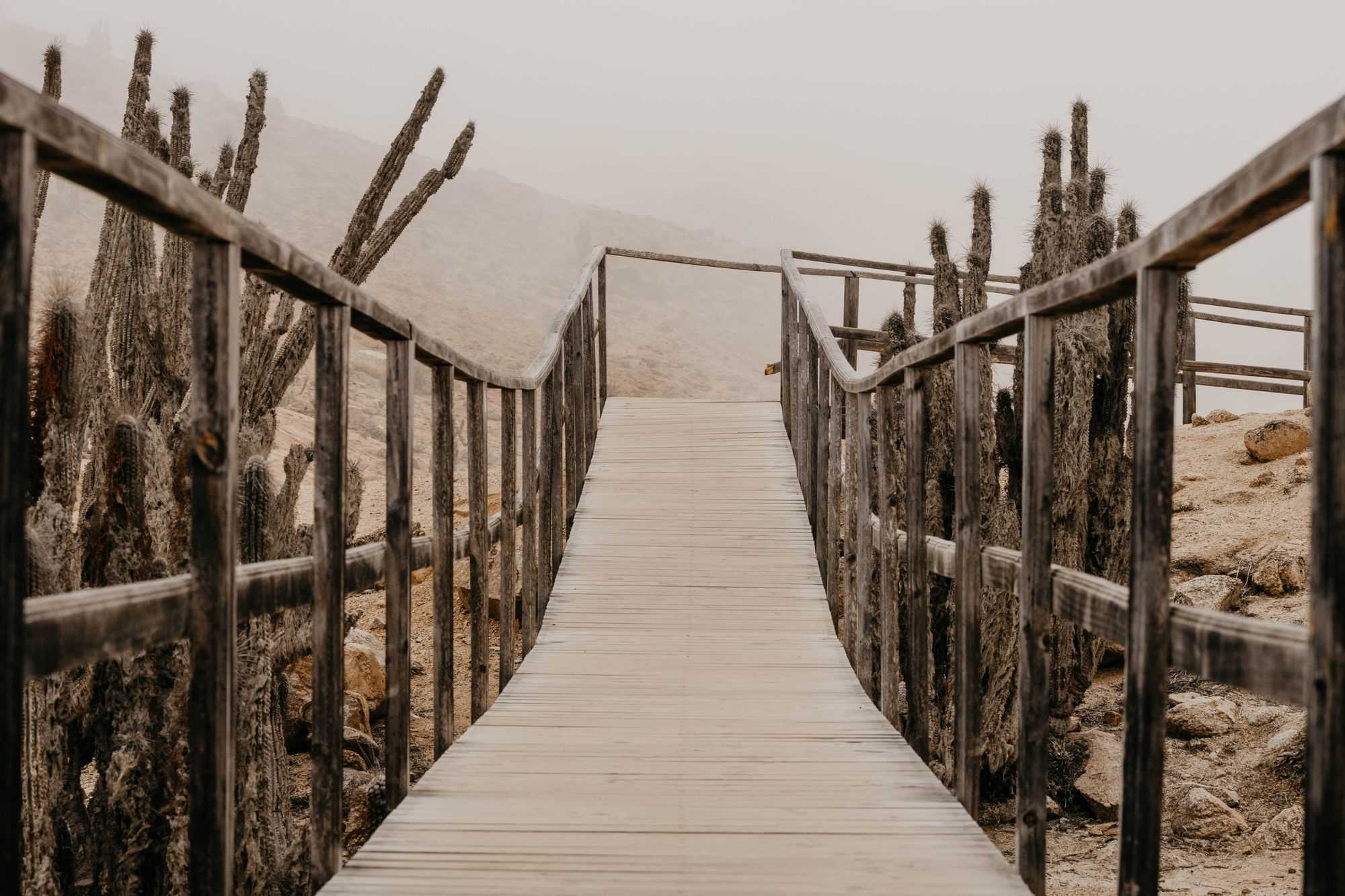
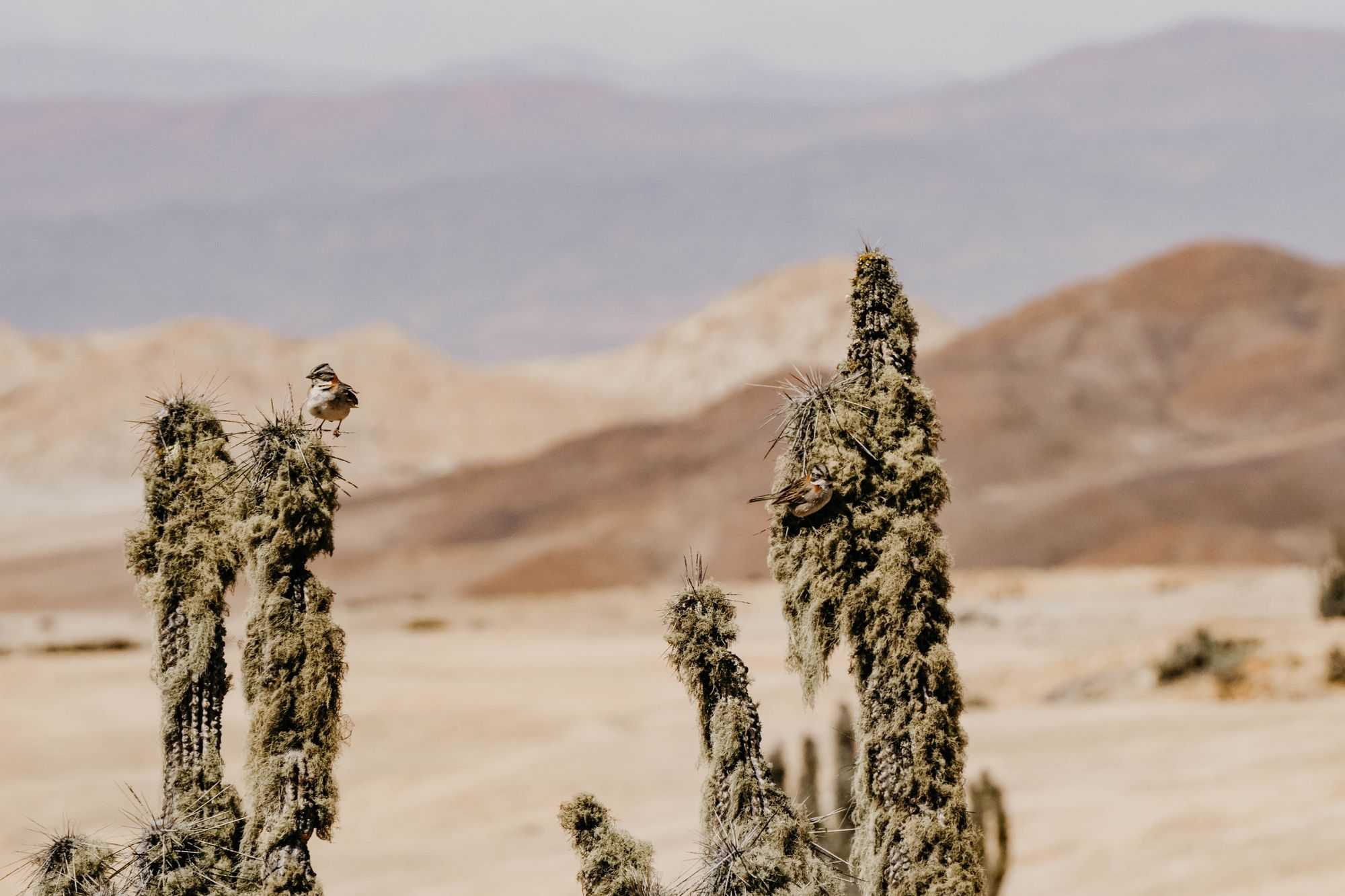
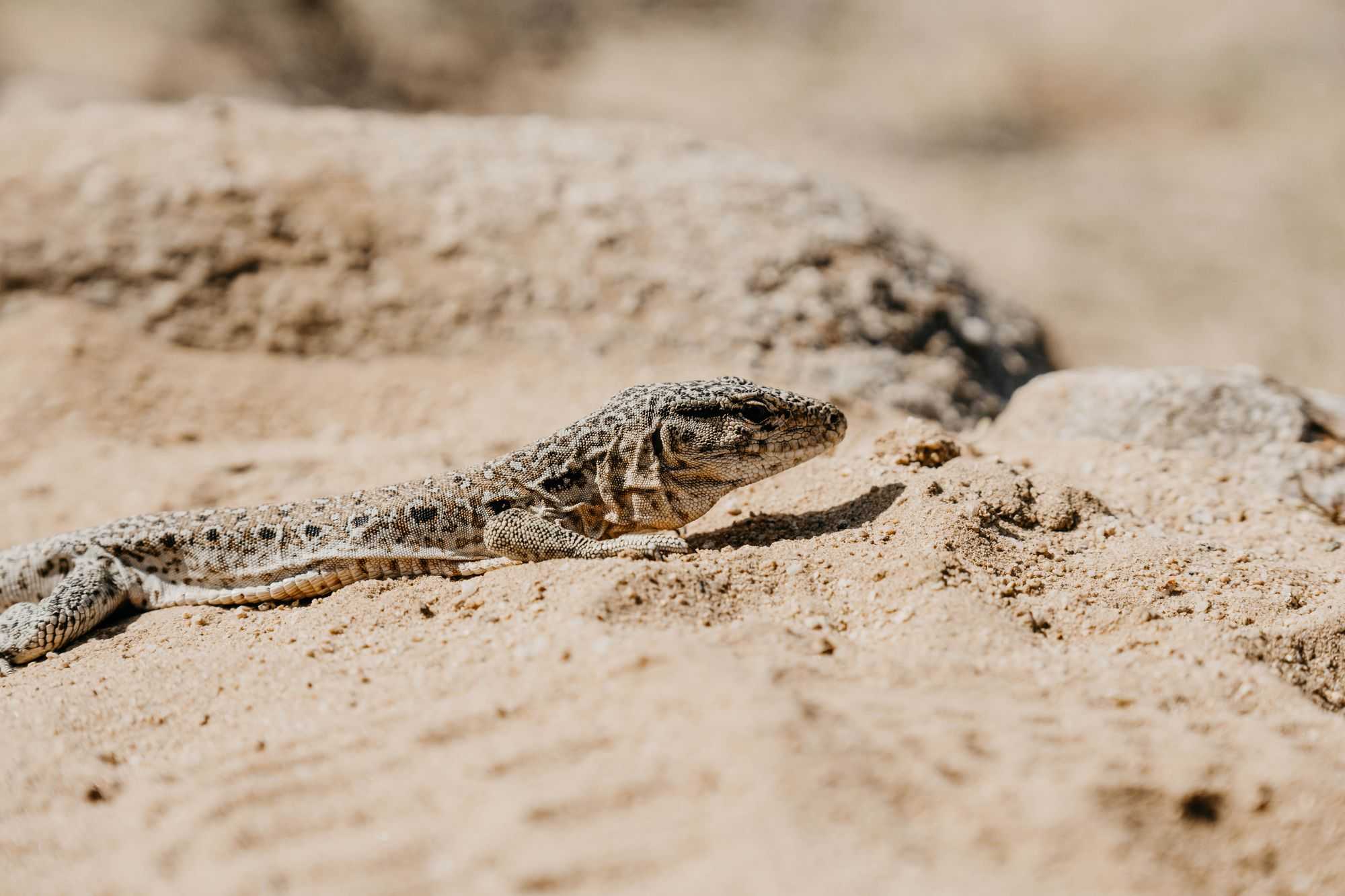
The northernmost point of this first leg of the journey is the "Pan de Azucar" park. A positive side effect of the off-season is that we don't have to pay an entrance fee and can stay overnight directly at the starting point of the hike. In this fascinating region where desert meets differently coloured hills and the turquoise waves crash against the coast, we do several hikes/walks. We find springs in the middle of the desert, spot guanacos (the ancestral form of the domesticated llama) or the not at all shy desert foxes cross our path or campsite. What wonderful surprises. Less beautiful is the view from the platform, where we should see the whole coast. The thick fog is once again our enemy, it doesn't want to disappear even after an hour of waiting. But the next day we are finally granted the opportunity to admire part of this panorama, from another vantage point the fog releases parts of it. So we enjoy a few days in the park, marvel at the Milky Way and other distant galaxies we don't know and see the most beautiful sunsets of our lives. The sky really turns into all colours, what a spectacle, which can't really be captured with the camera (we tried).
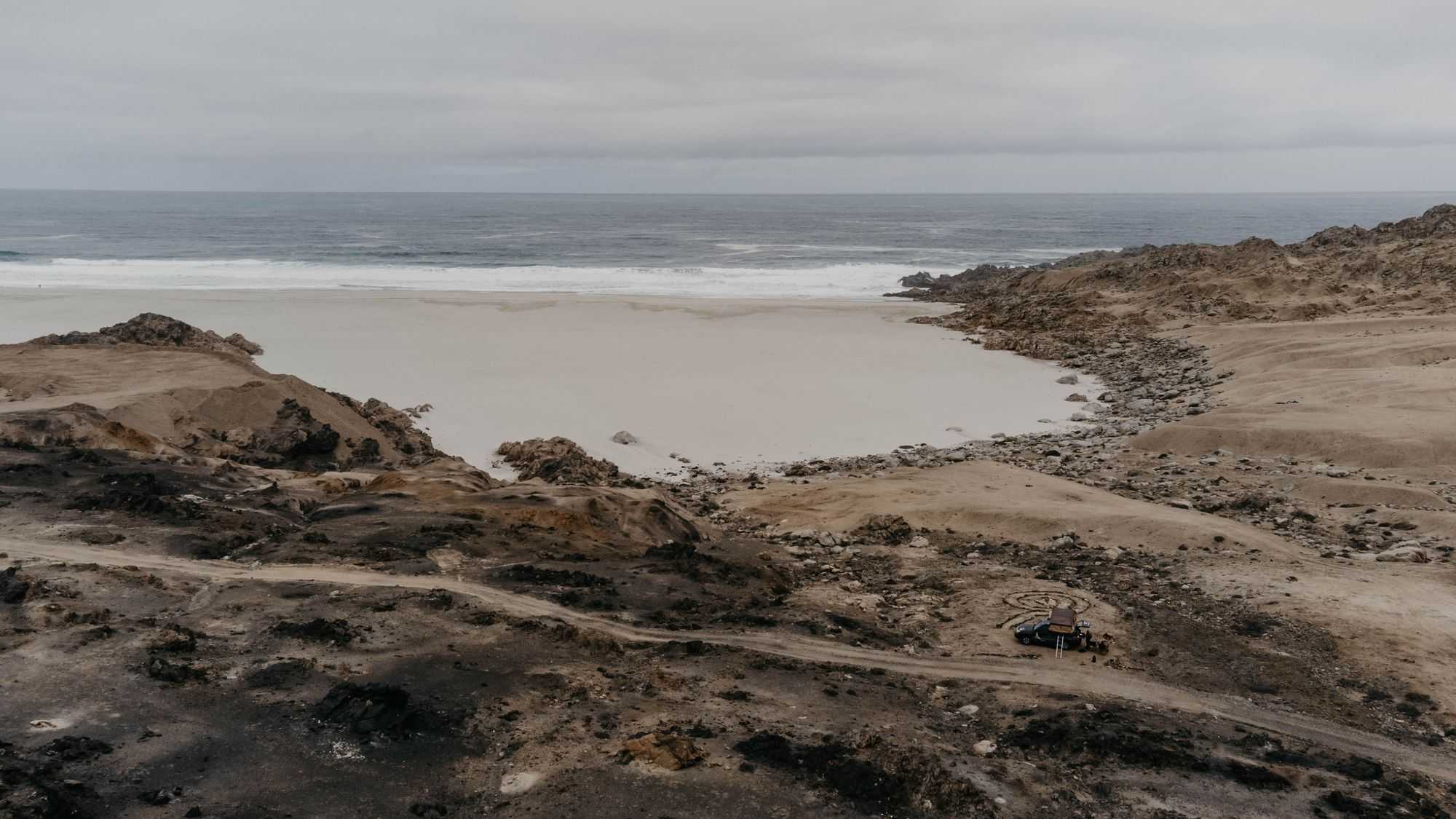
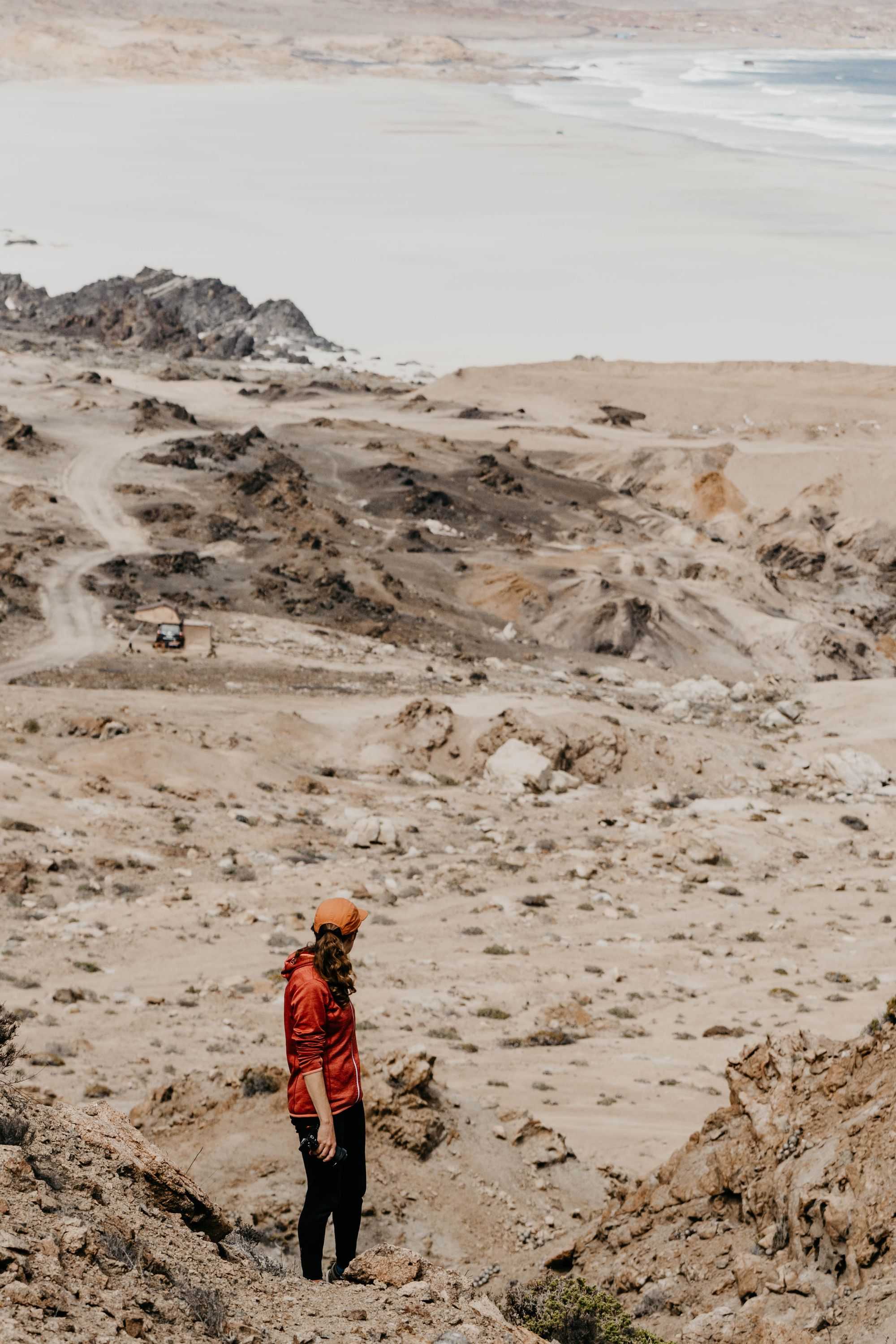
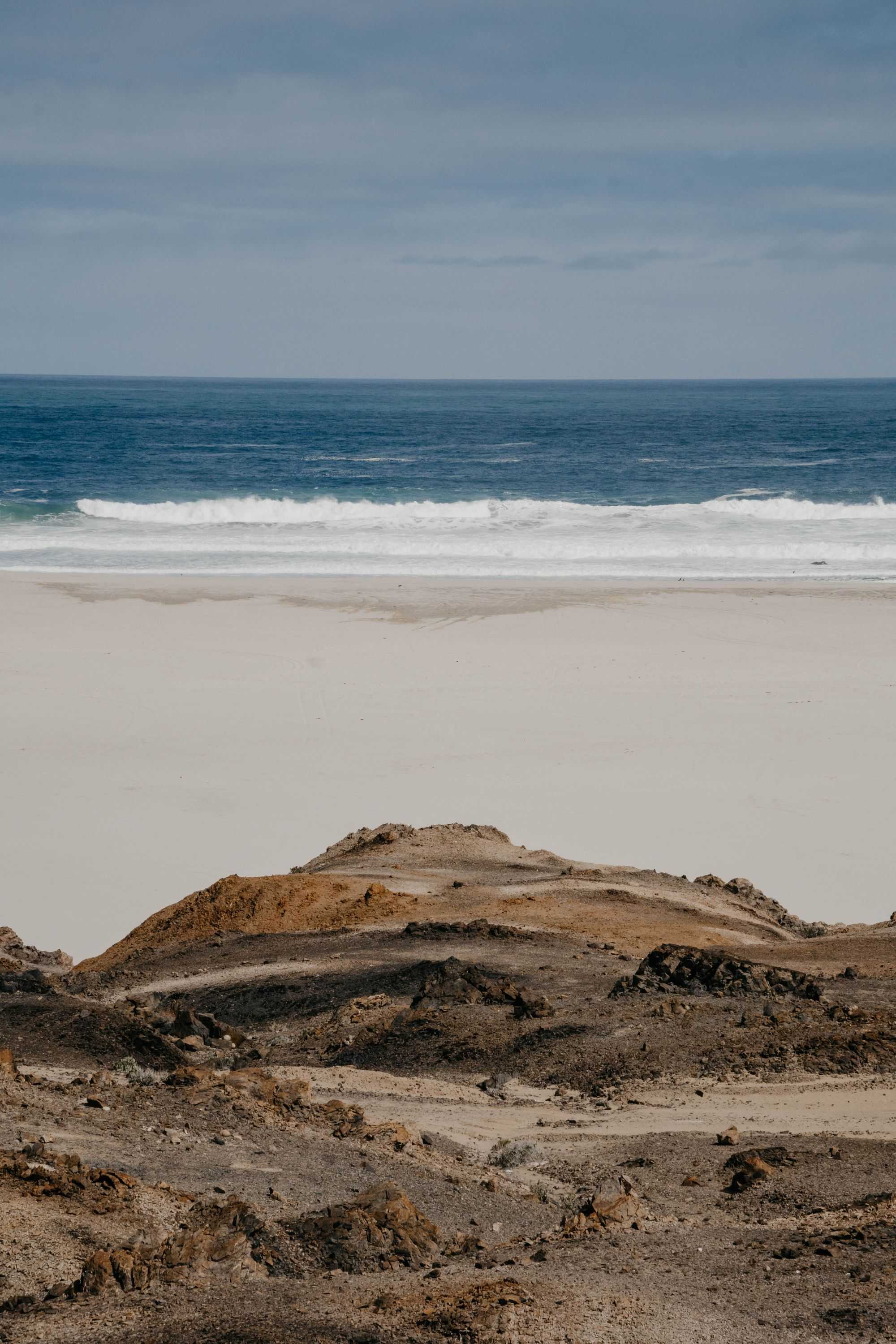
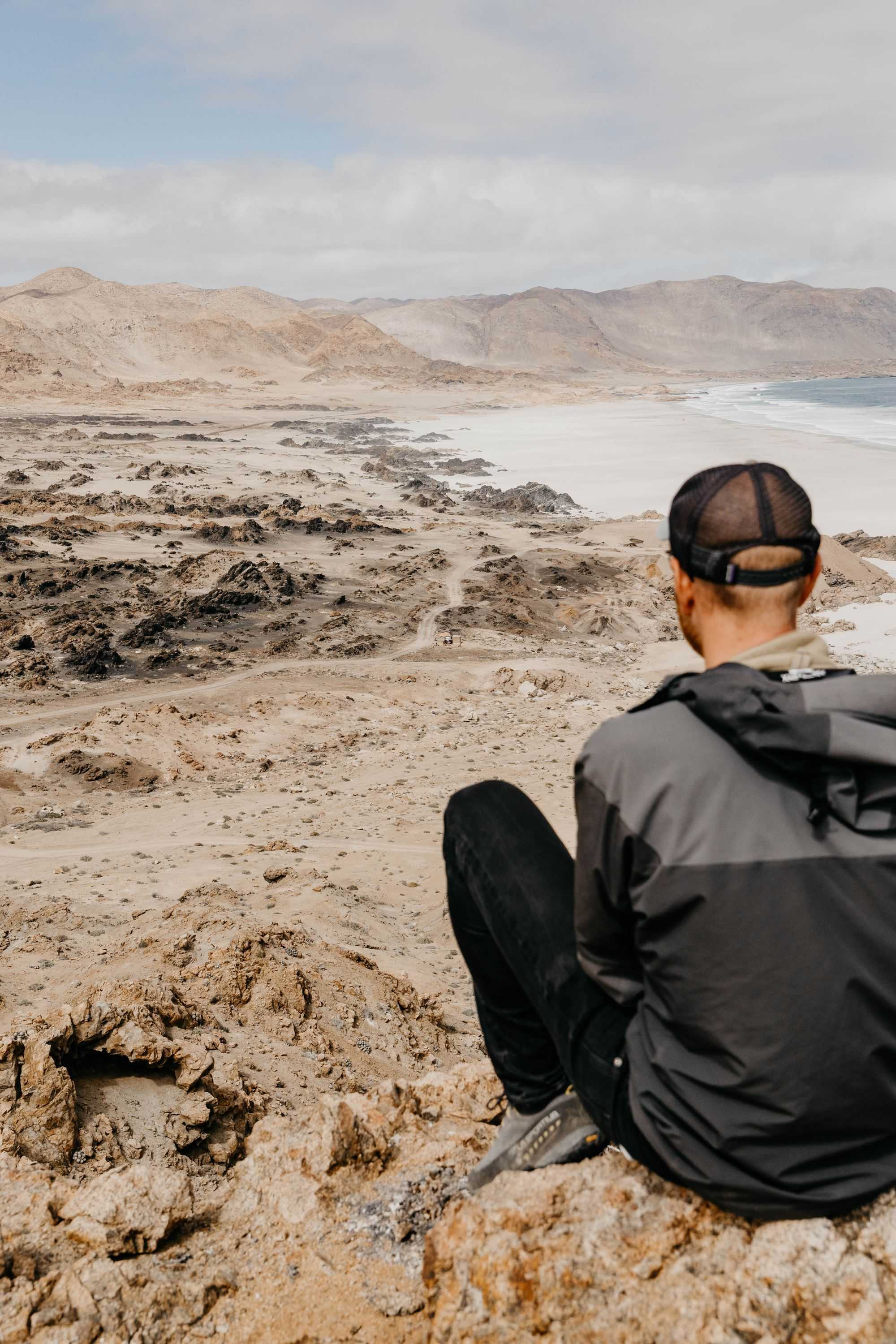
Then we turn around and head south again, we have deliberately not visited some places yet so that we have something to do on the way back. One of them is Choros, a small coastal town which is famous for its offshore islands. Among other things, Humbolt penguins, an endangered species of spectacled penguins, live there. Here, the low season is our undoing. A boat for us alone is far too expensive, and since no more tourists show up even after a few hours, we say goodbye again without seeing a penguin. Fortunately, there are other places in South America to see them, because we really want to.
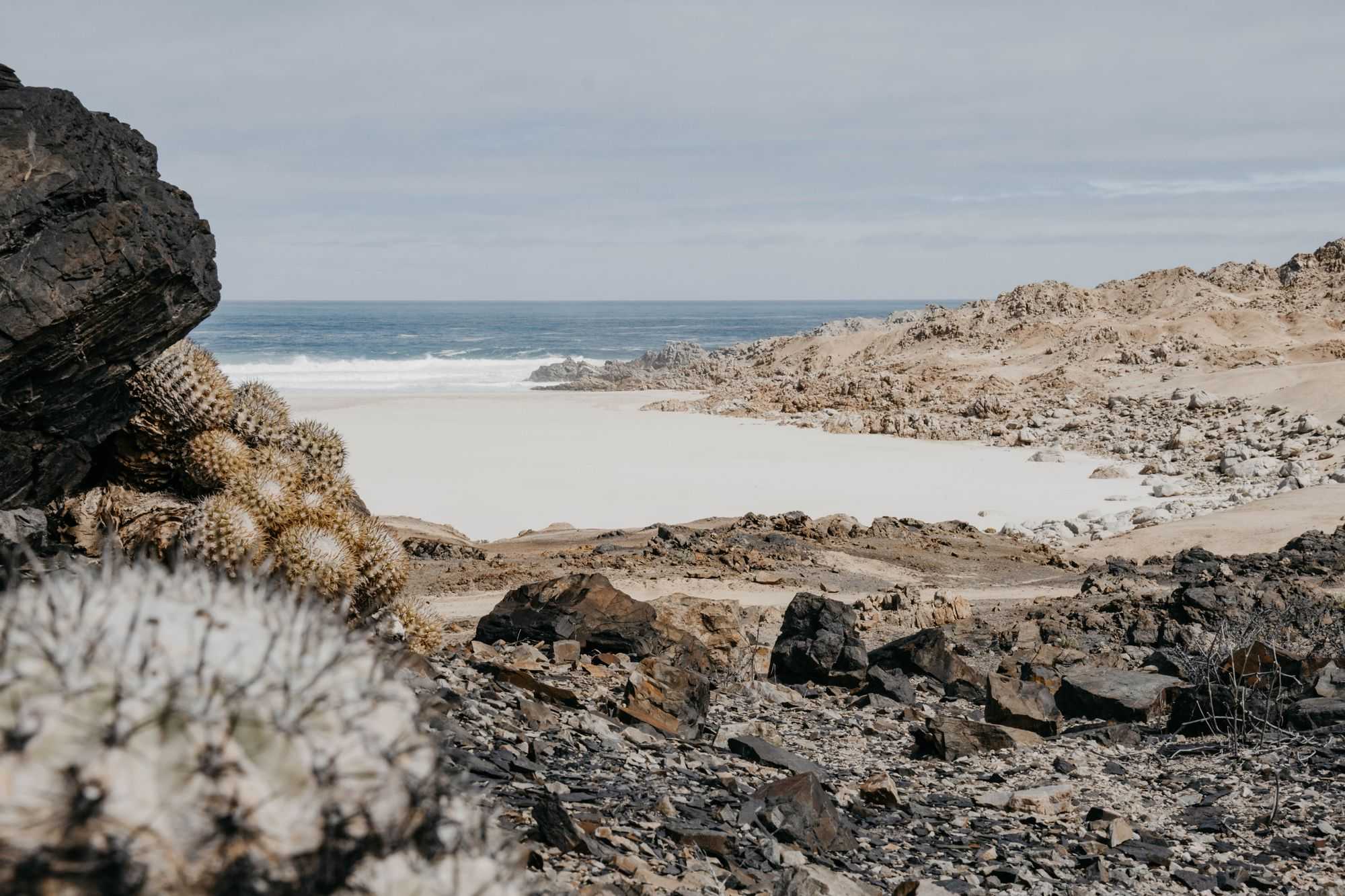
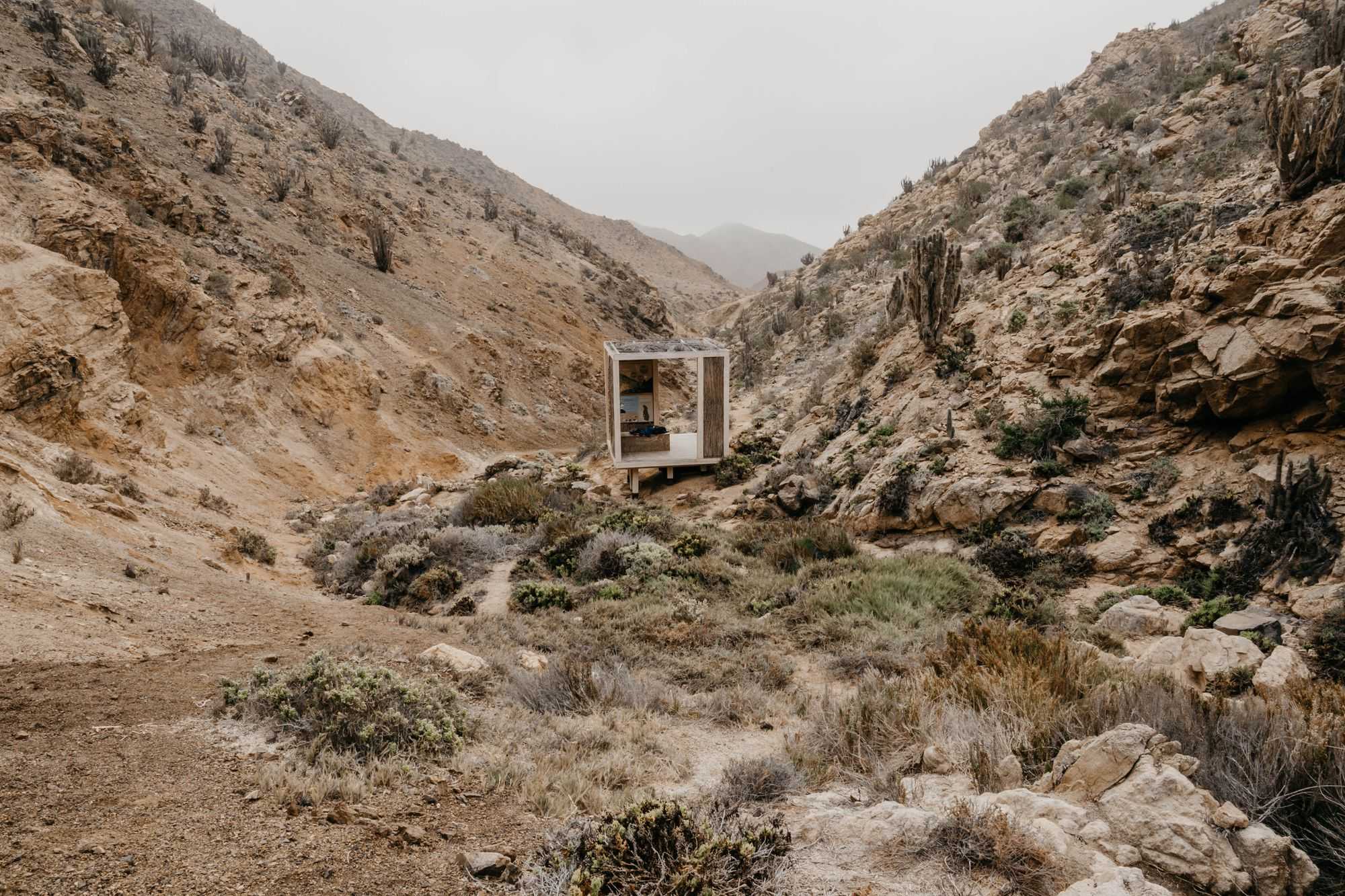
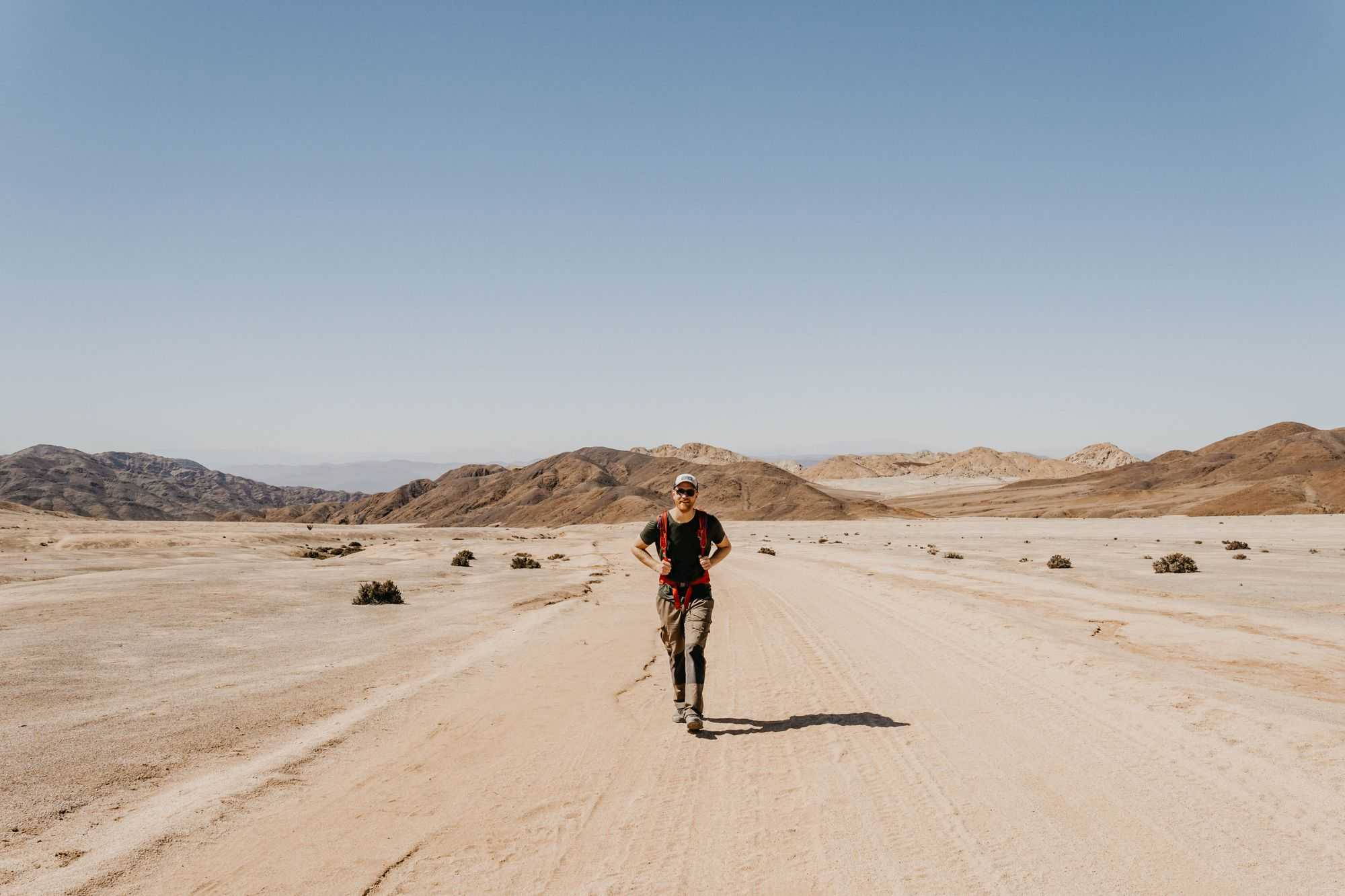
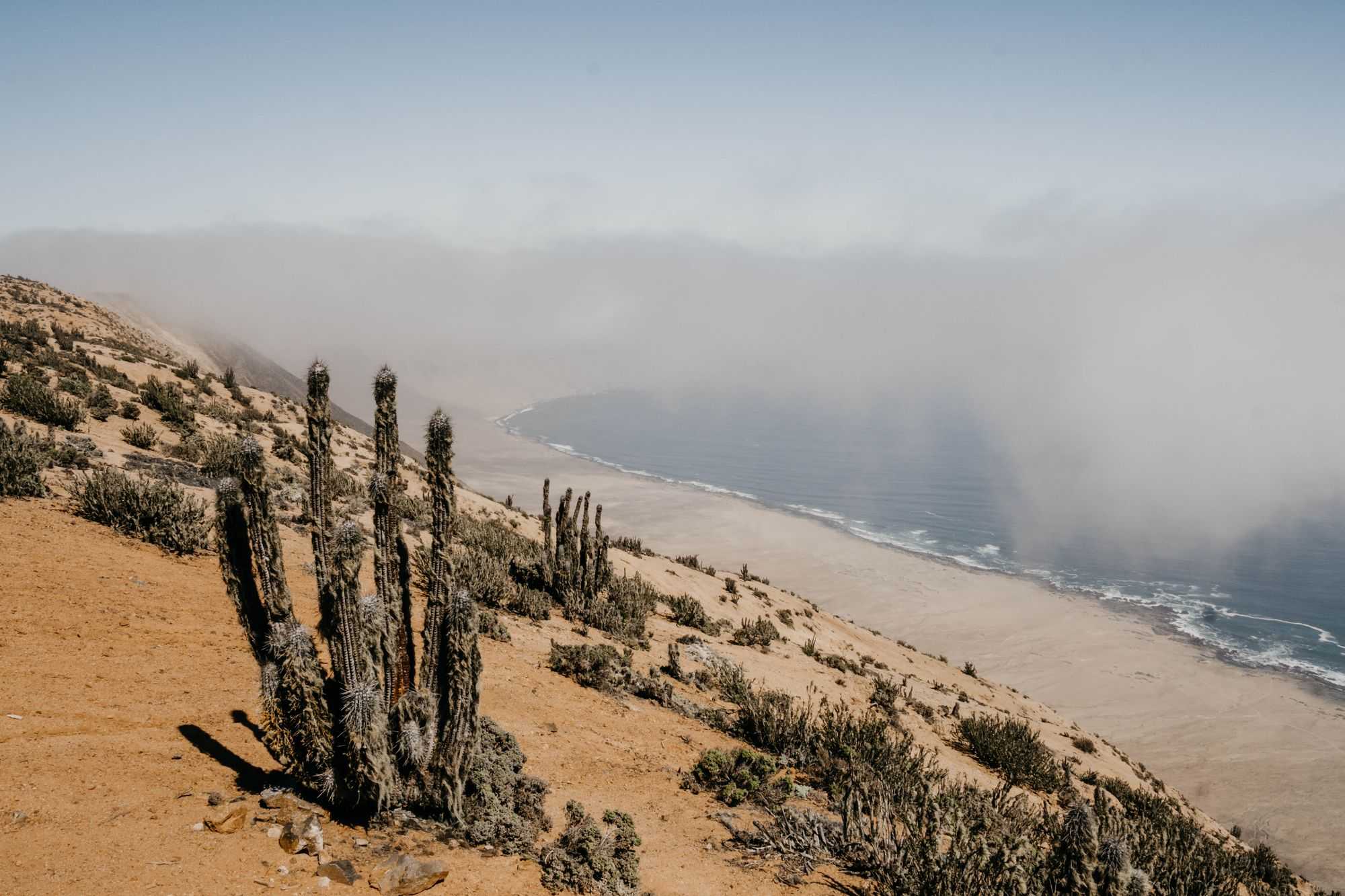
In La Serena, a bigger town in the north, we pick up a spare part for the car. Nothing bad, but a small upgrade of our vehicle. Afterwards, we jet off to the next park, the "Bosque Fray Jorge". Although the sign a few kilometres before the entrance says the park is closed, we drive there, because we have already learned that signs and other information cannot always be relied upon. But in this case we are faced with closed gates. We park our car at the park entrance to spend the night, when in the evening a ranger (out of hundreds) appears and tells us that the park will be open tomorrow. Perfect, we are happy. The next day we visit the park high up on the hill, it is a cloud forest. Apart from nature, there are also rangers to be seen. There is one at every corner, you can't get lost and they clearly outnumber the visitors. The park itself is quickly seen, because the majority of the paths are closed, for inexplicable reasons (maybe they couldn't find more rangers...). However, it has to be mentioned here that the parks here are super well-maintained, paths are marked and interesting information boards can be found. Therefore, we don't understand why there are so many employees, but that's all right.
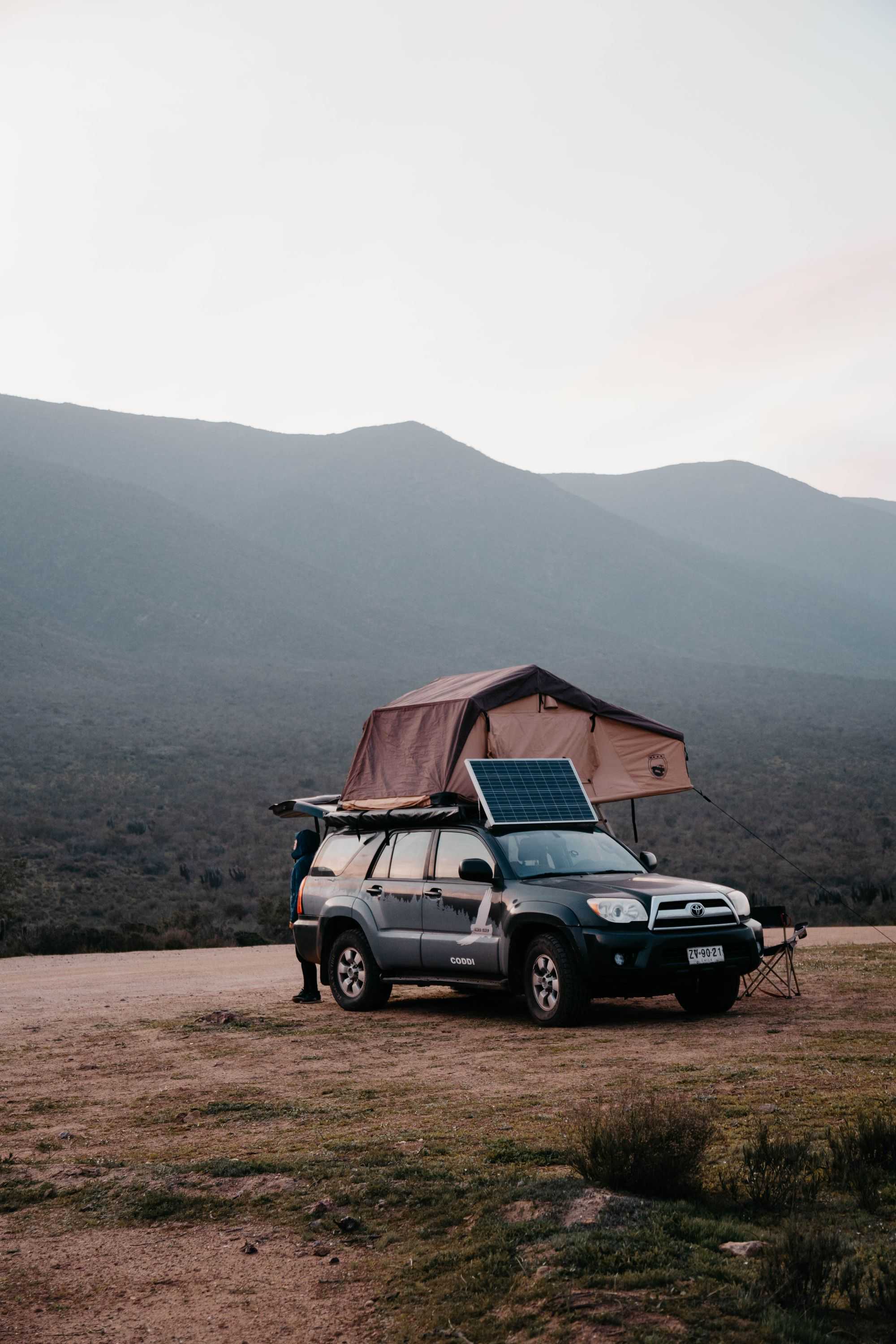
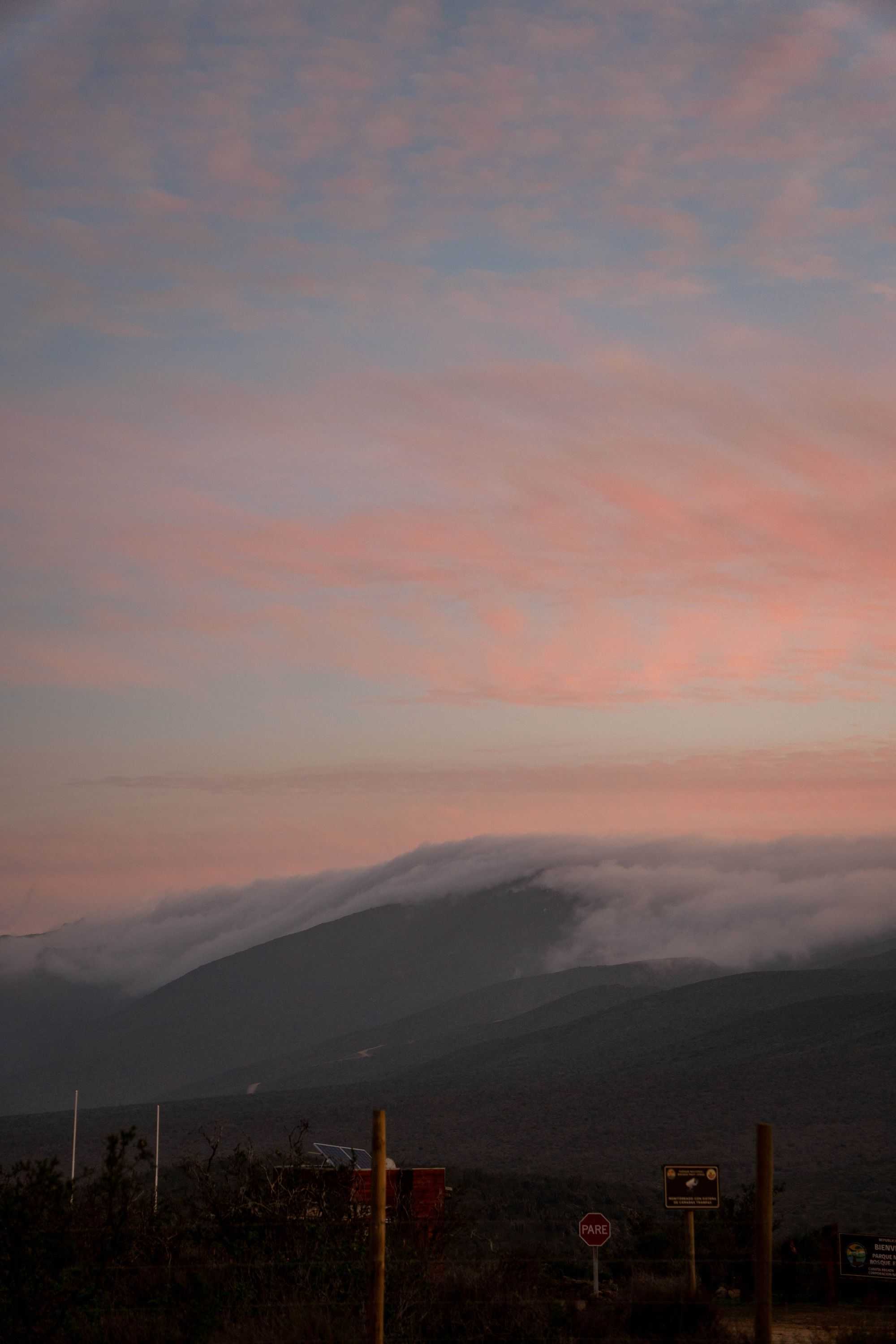
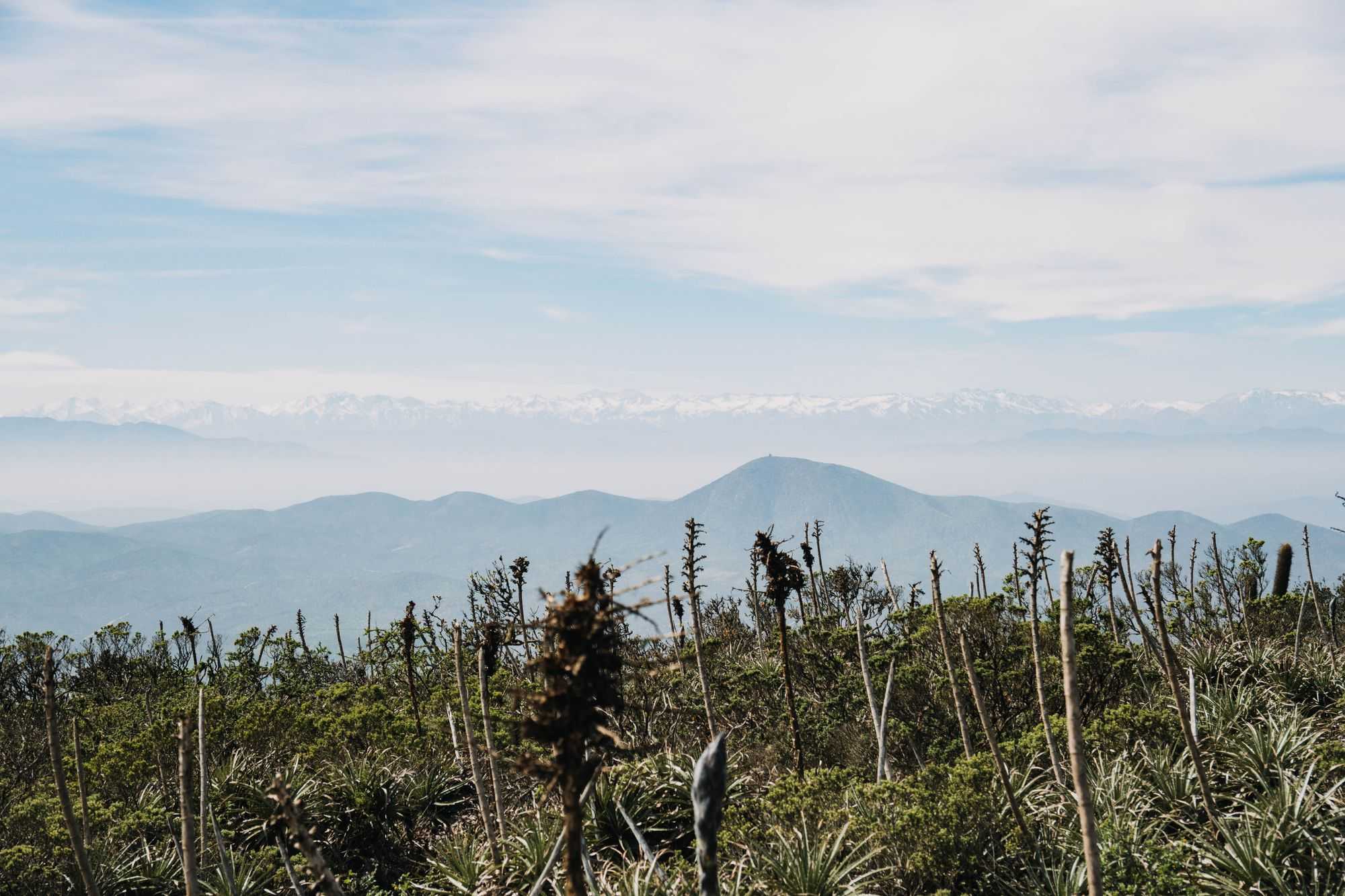
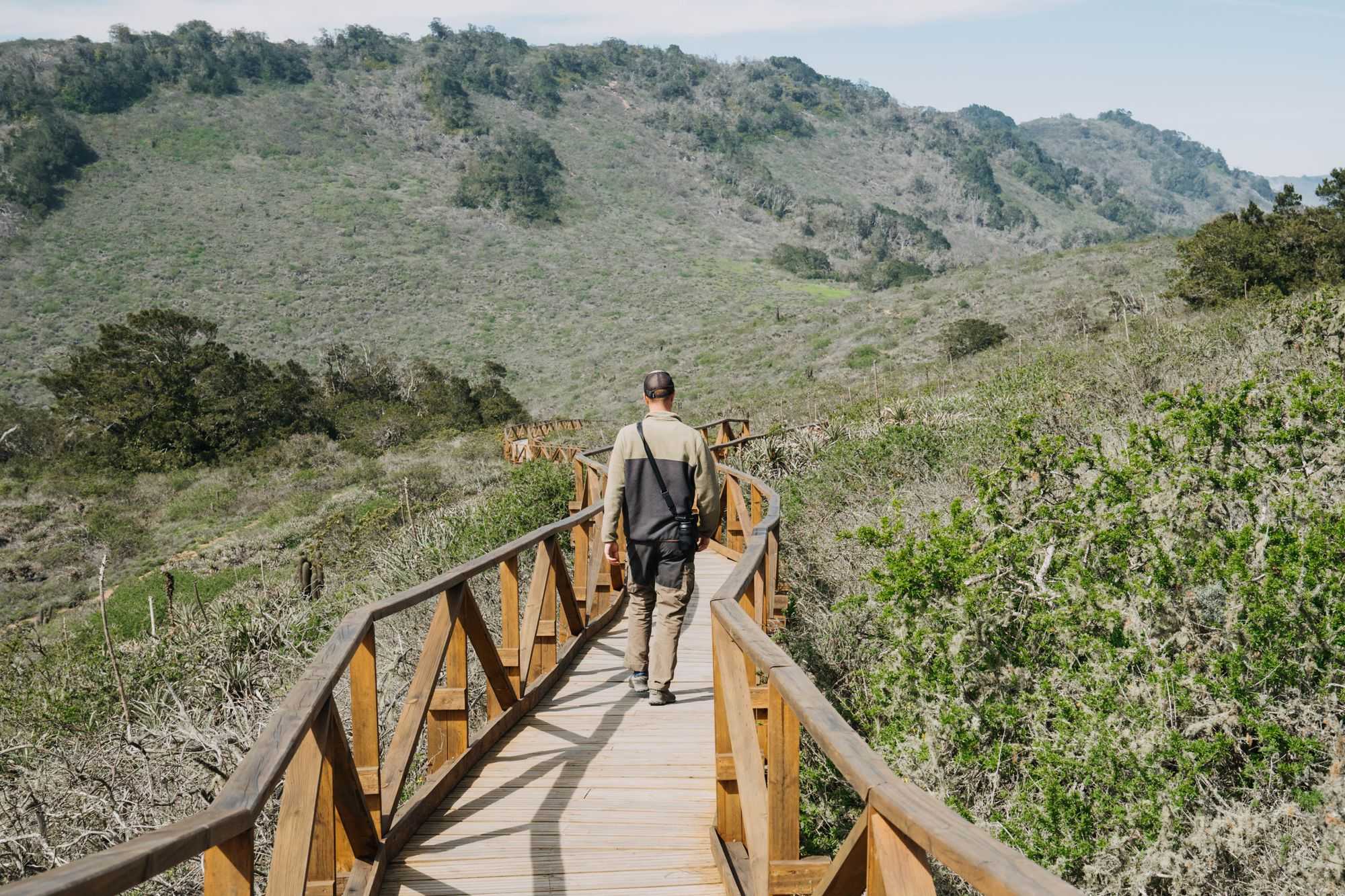
At the end of this loop we reach our very first wild camping site again and have already completed the first part of our car journey. What a nasty surprise awaits us the next morning will follow in the next blog entry. In this sense, "Hasta luego".
